Bird song classifiers
Decision table for identifying birdsong
Übung
| Bird | Description | Audio |
 Streifenkauz
Streifenkauz | Automatically generated from Xeno-Canto recording. | ♫ |
| improvisiert melodisch | ||
| Mimikry | ||
|
|
Mimikry improvisiert melodisch slow low-high (2-8 KHz) .
Nabu: Den weichen, melodischen Gesang trägt das Männchen zumeist im Singflug vor. [Link]
Song: | |
| singt 5-19 Sekunden | ||
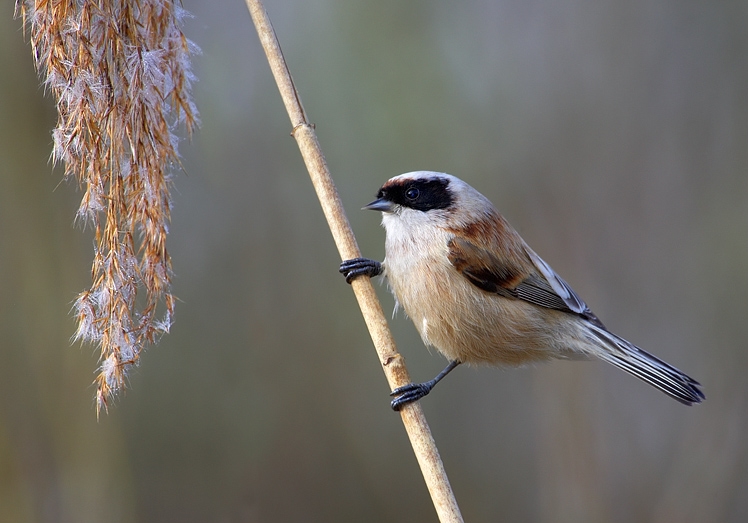 Beutelmeise ■■
Beutelmeise ■■ |
singt 5-19 Sekunden fast low-high (1-8 KHz) .
Nabu: In den Gesang werden viele Pausen, Triller und Rufe eingebaut. [Link]
Call: |
♫

|
| stereotypisch melodisch | ||
 Ortolan hlhlhlhl ■■
Ortolan hlhlhlhl ■■ |
stereotypisch melodisch fast medium (3-5 KHz) .
First about 4 hlhlhlhl then a single higher or lower note
Song: |
♫

|
| einnotig | ||
 Berglaubsänger ■■
Berglaubsänger ■■ |
einnotig fast high (3-7 KHz) .
Single note repeated 6 or 8 times quickly in half a second
Song: |
♫

|
| improvisiert melodisch | ||
| Raspel, rasseln | ||
 Steinschmätzer ■■
Steinschmätzer ■■ |
Raspel, rasseln improvisiert melodisch fast medium (2-6 KHz) .
|
♫

|
| singt 5-19 Sekunden | ||
|
|
singt 5-19 Sekunden fast low-high (2-10 KHz) .
Wild warbling of about 7 seconds
Song: Wikipedia sagt ähnelt dem Gesang des Stieglitzes, in Aufbau und Tonfolge auch dem Girlitz. Scheint nicht viel zu singen - XenoCanto hat nur 6 Seiten von Aufnahmen! |
♫

|
| nicht musikalisch | ||
| Krächzen, Mimikry | ||
|
|
Krächzen, Mimikry nicht musikalisch slow low-high (1-10 KHz) .
Grehh, grehh, grehh!!
Song: |
♫

|
| stereotypisch melodisch | ||
 Mauerläufer ■■
Mauerläufer ■■ |
stereotypisch melodisch fast medium (1-5 KHz) .
5-notes LlmHh with pirol-like slowness and tone.
Song: |
♫

|
| einfach rhythmisch | ||
| Triller | ||
 Birkenzeisig ■■
Birkenzeisig ■■ |
Triller einfach rhythmisch fast medium (2-6 KHz) .
A few chirps and a trill, then repeat.
Song: |
♫

|
| singt 5-19 Sekunden | ||
|
|
singt 5-19 Sekunden veryFast high (4-10 KHz) .
Weird hectic song, and you'll probably hear them but not see them, which is a shame, because they're a colorful yellow bird. The song seems to defy description - described variously as the jingling of a bunch of keys, like crushing glass or the pouring of broken glass (the German Wikipedia refers to a nickname 'Glasscutter'), the sound of a cork twising in a bottle (Thomas Seilnacht on digitalefolien.ch), and one source I can no longer find talked about a ruined cassette tape. A Portuguese web site aptly calls it 'a high-pitched and fast rambled sum of indistinctive elements', and U. Cornell's ebird.org calls it frantically fast, oiseaux-birds.com 'a prolonged, wheezy, chirping', beautyofbirds.com 'a buzzing trill'. |
♫

|
| einfach rhythmisch | ||
| Triller, aufsteigend | ||
|
|
Triller, aufsteigend einfach rhythmisch slow medium (1-5 KHz) .
Reminds me of a greenfinch - series of trills, whoops and other sounds with a long pause
Song: |
♫

|
| einnotig | ||
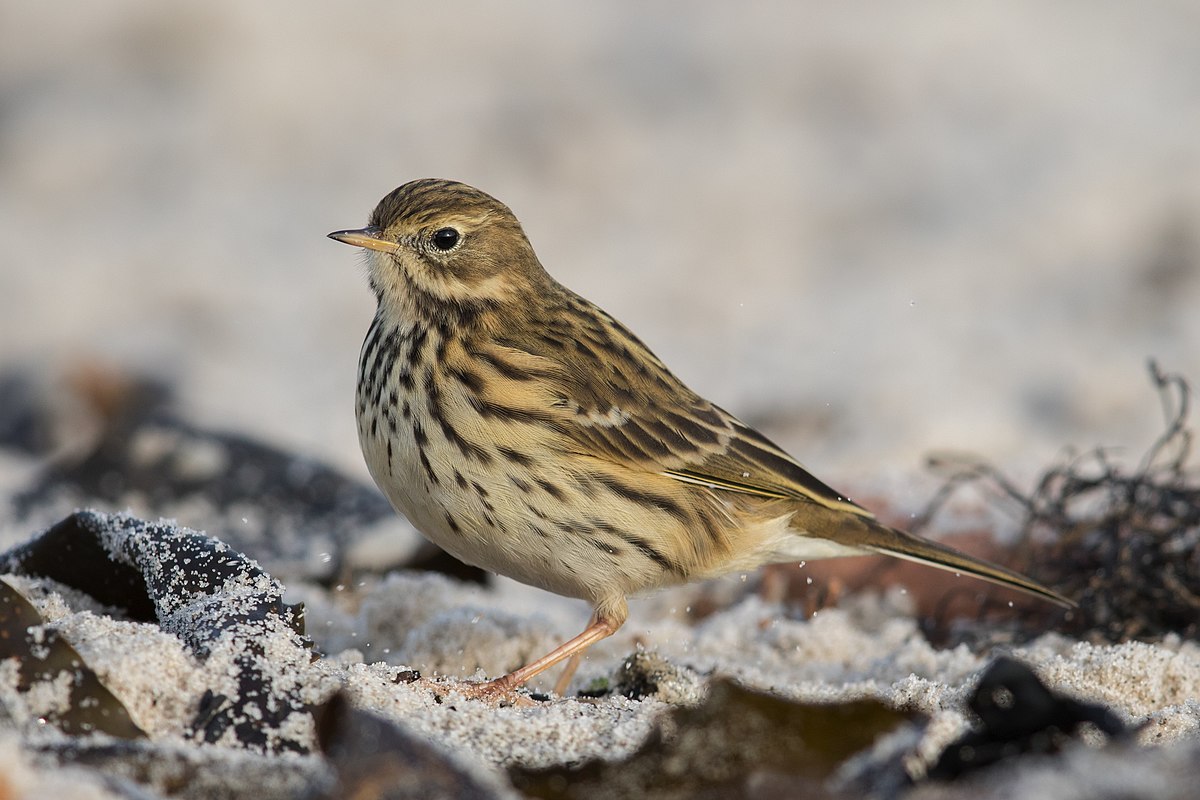 Wiesenpieper ■■
Wiesenpieper ■■ |
einnotig fast medium (1-5 KHz) .
Single note, possibly rising at the end. (Or: long 4 second phrases, gradually louder then softer; swoopy or whoopy.) Sings in flight. BirdID: Song very similar to Rock Pipit, but tone less full and more brittle. Lacks Rock Pipit's closing trill, and beginning is less "hammering". - but what does a rock pipit sound like?
Song: |
♫

|
| stereotypisch melodisch | ||
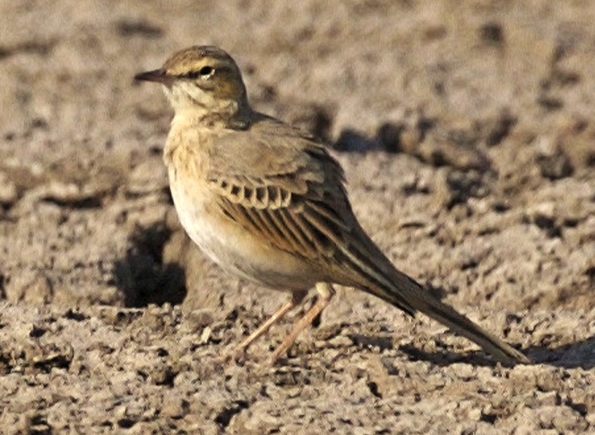 Brachpieper ❑❑
Brachpieper ❑❑ |
stereotypisch melodisch slow medium (2-6 KHz) .
Song simple. Consists of three notes merged in a short, continuous and ringing "tsee-ro-ee", given every 1-2 seconds.
Song: |
♫

|
| churr | ||
|
|
churr stereotypisch melodisch slow high (3-9 KHz) .
The song is two parts and unvarying. If it were a pop song, you'd call it ABABAB... The second part starts with a
sputtering trill. The RSPB in the UK says 'warble with crackling trills.' Vogelwarte.ch says
'Der gepresst knirschende Gesang setzt meist lange vor Sonnenaufgang ein und ist der Auftakt für das Vogelkonzert.'
BirdLife-Zuerich.ch says 'Einziger Sänger morgens um drei in den Häuserschluchten'.
Obwohl NABU.de meint, sie singen nicht mehr nach Juli, war ich angenehm überrascht sie in Oktober im Tessin zu hören.
Song: Other: Einige Arten wie der Hausrotschwanz singen zudem im Herbst, bevor sie in ihr Winterquartier ziehen. Die Männchen legen dann ihre Reviere bereits «provisorisch» fest. [Link] |
♫

|
| Mimikry | ||
 Gartenrotschwanz ■■
Gartenrotschwanz ■■ |
Mimikry stereotypisch melodisch slow high (3-9 KHz) .
I though I had these guys figured out after hearing them in Locarno several times, but they're hard to get a handle on! At BirdID they are described the first two parts of a three-part song like this: 'an ascending single note, immediately followed by a trill', whereas in Locarno I heard an initial high-low-high-low, sometimes without the final low, perhaps also a quick middle note, and no trill. Then a relatively short blackbird or warbler-like tune of maybe 5-8 notes. Listening to more recordings at XenoCanto has completely confused me now! BirdID also says the song is similar to the black redstart, which I sometimes hear at XenoCanto, but never did in Locarno! They also note a similarity to the Lesser Whitethroat (Klappergrasmücke), which I hope to hear in Maienfeld.
Song: | ♫ |
| einfach rhythmisch | ||
|
|
einfach rhythmisch slow medium (1-5 KHz) .
BirdID says multi-syllabic, rolling phrases, although it often seems to be one syllable as well. Hope to hear it and especially see it in Maienfeld.
Call: | |
| Triller | ||
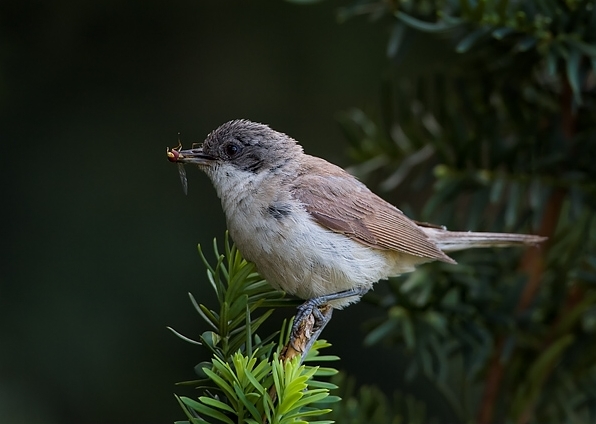 Klappergrasmücke ■■
Klappergrasmücke ■■ |
Triller einfach rhythmisch slow medium (3-5 KHz) .
|
♫

|
| improvisiert melodisch | ||
| Mimikry | ||
|
|
Mimikry improvisiert melodisch fast medium (2-5 KHz) .
They sometimes sing like a blackbird on speed - also non-stereotypic, seemingly improvised,
in short bursts.
Our local guy ends most of his songs with the same seven notes, which I find a good way to confirm the identification. In Ticino we often heard the 'Leiern' sound - the warblers would sing just the first 3 notes of a longer song, then stop. The order varied; high-medium-low I call 'Figaro' as in the opera, low-high-medium 'whiskey bar', as it sounded to me like the Kurt Weill lyrics, 'O-oh-show me-the-way to-the-next whis-ke-bar' - but the warbler usually stopped after 'way' or 'next' The British authors of The Sound Approach claim to hear 'a warblel and a whistle'.
Song: | ♫ |
|
|
improvisiert melodisch fast low-high (2-7 KHz) .
Series of short, often squawky little bits, sometimes like a house sparrow, often repeated with only small variation. E.g. MmLMH? |
♫

|
|
|
Mimikry improvisiert melodisch fast high (3-9 KHz) .
General: Der Gesang (bei Vogelwarte.ch) klingt für mich ähnlich wie eine Mönchsgrasmücke, aber nur in sehr kurzen Phrasen. Song: |
♫

|
|
|
Automatically generated from Xeno-Canto recording.
Call: |
♫

|
| singt 20 Sekunden oder länger | ||
| Mimikry | ||
 Rotkopfwürger ❑❑
Rotkopfwürger ❑❑ |
Mimikry singt 20 Sekunden oder länger fast medium (2-6 KHz) .
|
♫

|
|
|
Mimikry singt 20 Sekunden oder länger slow medium (1-5 KHz) .
Reminds me a bit of a Rohrsaenger/Feldlerche with its short, varied bits. BirdID says Song surprisingly varied with many expert imitations of small passerines, interwoven with bell-like ringing and dry chirping sounds. May be confusing and hard to identify if bird not seen. Song not very loud, but phrases can be very long. 'May be confusing' - tell me about it! What's not confusing about trying to tell apart 422 species of Swiss birds!
Song: |
♫

|
|
|
Automatically generated from Xeno-Canto recording.
Call: |
♫

|
|
|
Automatically generated from Xeno-Canto recording.
Song: |
♫

|
| stereotypisch melodisch | ||
| Triller, Raspel | ||
|
|
Triller, Raspel stereotypisch melodisch fast low-high (2-7 KHz) .
General: Sequence of 4-6 rhythmic elements at different pitches.
A sort of trill is often start or end of the sequence (can also be a call!),
and there are slides.
Song: | ♫ |
| einfach rhythmisch | ||
| Raspel | ||
|
|
Raspel einfach rhythmisch slow medium (1-5 KHz) .
General: Bergfink - call cheep plus two ascending Grünfink squawks. Song? Grünfink squawk but not descending, every 3-4 seconds.
Song: |
♫

|
| stereotypisch melodisch | ||
| Triller, Mimikry | ||
 Zippammer ■■
Zippammer ■■ |
Triller, Mimikry stereotypisch melodisch fast low-high (2-9 KHz) .
AppearanceAndIdentification: orange-brauner bauch, weisse brust+kopf mit 3 schwarzen streifen am kopf (unter/am/über Augen), braun+dunkelbraun auf Flügeln; aber Weibchen eher braun
Song: Notes from 2022: Short song, relatively long pause, repeated with slight variation? Has a very short triller of just 3 notes. May have heard and seen one walking parallel to the Aa on the way to Pfaeffikersee today, though the visual ID is very uncertain; the Xeno-Canto song here sounds different than my 2022 description - musical like a chaffinch but rising, not falling. Song: |
♫

|
| Mimikry | ||
|
|
Mimikry stereotypisch melodisch fast low-high (2-7 KHz) .
General: Ähnlich wie ein Rohrsänger aber nur kurze Segmente mit klaren Pausen. Song: Nabu: Sein Gesang umfasst trillernde, kurze und musikalische pfeifende Laute, unter anderem „piUU“, „trrüh“ und „tu-ki-jüüh“. [Link] Song: |
♫

|
| improvisiert melodisch | ||
| absteigend | ||
|
|
absteigend improvisiert melodisch slow low-high (2-9 KHz) .
Paced like a blackbird, humorous mix of elements like a nightingale. Huge range, elements from 2-5 KHz, others 6.5-9 KHz. Can sing for up to 50 minutes, and a male may know 100 melodies in its repertoire.
Song: | ♫ |
| nicht musikalisch | ||
| rasseln | ||
|
|
rasseln nicht musikalisch fast low-high (2-9 KHz) .
Song: |
♫

|
| stereotypisch melodisch | ||
|
|
stereotypisch melodisch slow medium (3-5 KHz) .
|
♫

|
| nicht musikalisch | ||
| Raspel | ||
|
|
Raspel nicht musikalisch slow medium (1-6 KHz) .
BirdID says song a mix of dry contact calls, BirdLife that it's almost only heard in flight. The XC recording is a bit of a chuckle to me.
Song: |
♫

|
| stereotypisch melodisch | ||
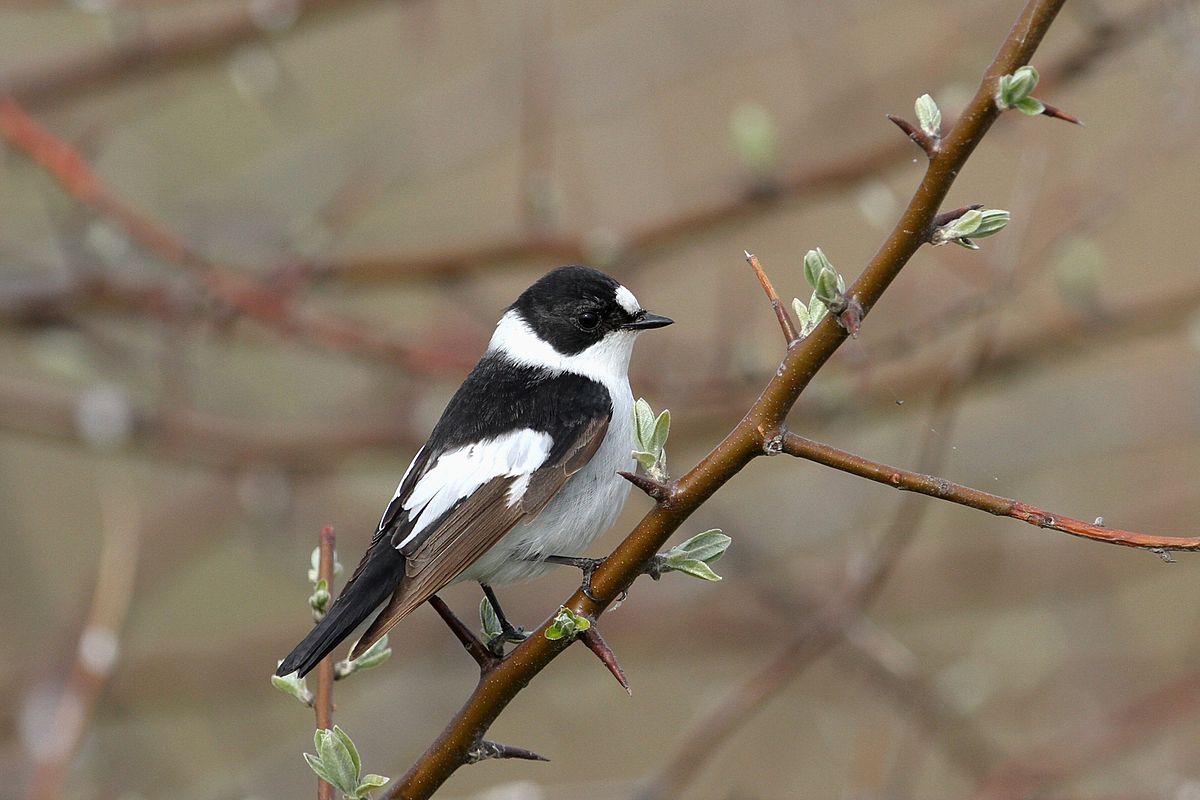 Halsbandschnäpper Mein Halsband, mein Halsband, er schnäppt ■❑
Halsbandschnäpper Mein Halsband, mein Halsband, er schnäppt ■❑ | stereotypisch melodisch fast high (3-7 KHz) . Simple tune... |
♫

|
|
|
Automatically generated from Xeno-Canto recording.
Call: Nabu: Ein hartes „kjack“ oder „schack“ sowie ein raues „tschräh“ hört man am häufigsten von der Dohle. Sie ist ein begabtes Stimmwunder und hat eine Vielzahl von Lauten und Imitationen auf Lager. [Link] | ♫ |
 Bartmeise ■■
Bartmeise ■■ |
Automatically generated from Xeno-Canto recording.
Song: |
♫

|
| einfach rhythmisch | ||
| Mimikry | ||
 Dorngrasmücke ■■
Dorngrasmücke ■■ |
Mimikry einfach rhythmisch fast high (3-7 KHz) .
Song: |
♫

|
| einnotig | ||
|
|
einnotig fast high (3-7 KHz) .
|
♫

|
| singt 20 Sekunden oder länger | ||
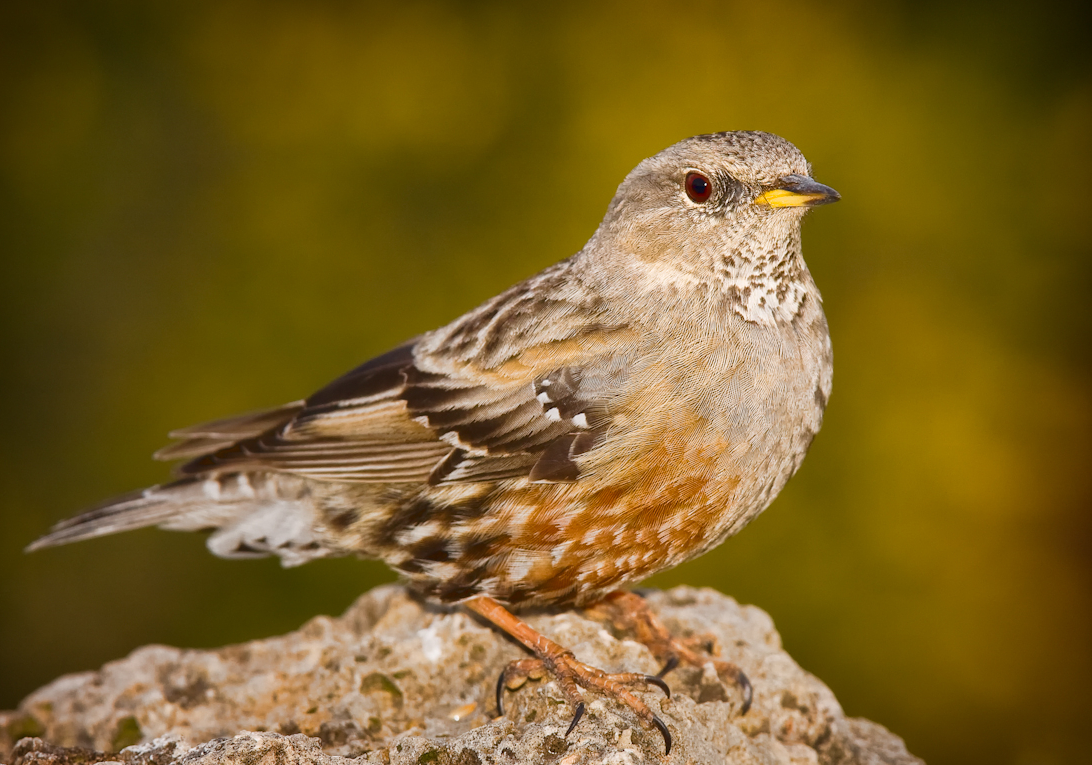 Alpenbraunelle ■■
Alpenbraunelle ■■ |
singt 20 Sekunden oder länger fast low-high (1-8 KHz) .
Fast, long, chirpy
Song: |
♫

|
|
|
Automatically generated from Xeno-Canto recording.
Call: | ♫ |
| zweinotig | ||
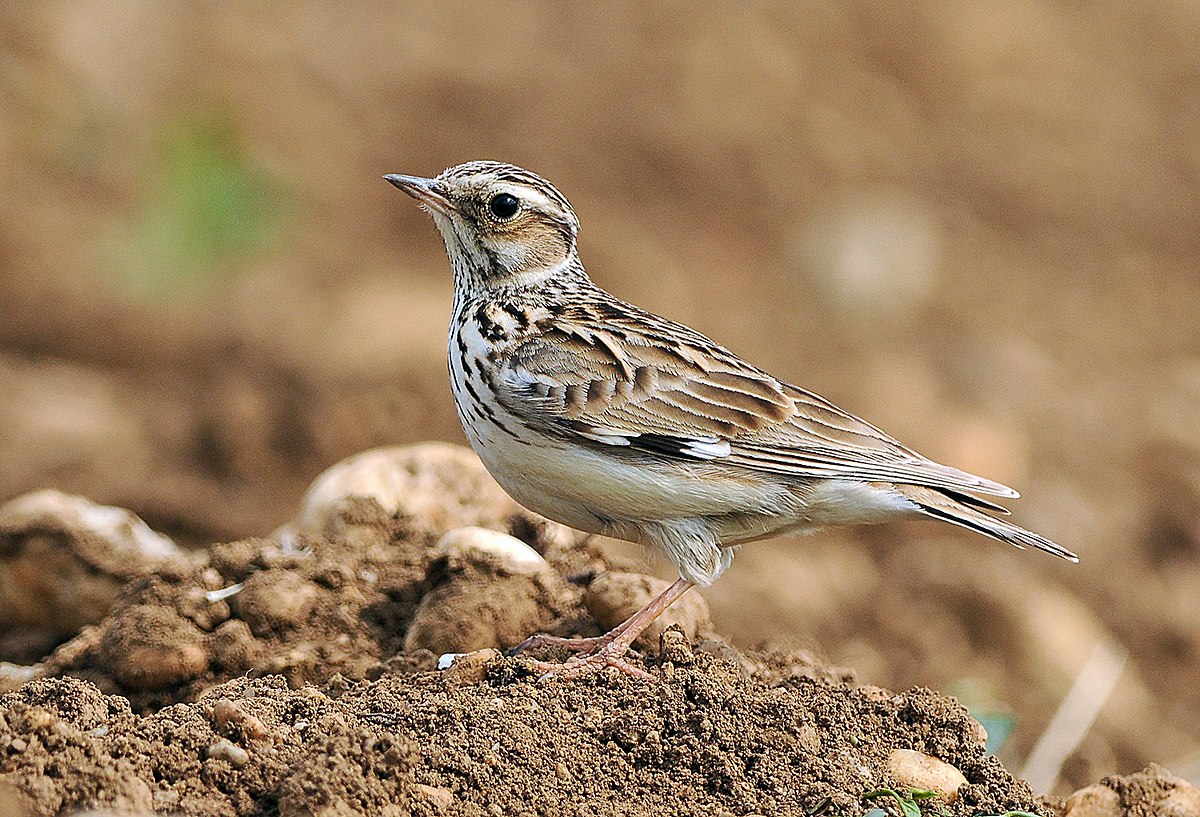 Heidelerche ■■
Heidelerche ■■ |
zweinotig fast medium (3-5 KHz) .
General: Slow for a lark? Fast to me. Song: |
♫

|
| nicht musikalisch | ||
|
| nicht musikalisch slow medium (1-5 KHz) . Komischer Ton, ein Zirpen, oft in grossen Truppen. |
♫

|
| stereotypisch melodisch | ||
|
|
stereotypisch melodisch slow high (6-8 KHz) .
|
♫

|
| einfach rhythmisch | ||
 weiblich.jpg) Sommergoldhähnchen Noten vom 'Sommer' steigen wie die Temperaturen ■■
Sommergoldhähnchen Noten vom 'Sommer' steigen wie die Temperaturen ■■ |
einfach rhythmisch fast high (6-8 KHz) .
Very high rhythmic repetition of about 3 seconds
Song: |
♫

|
|
|
einfach rhythmisch fast low-high (2-10 KHz) .
General: Higher-pitched than great tit, sometimes repetitive 1- and 2-note tunes like them, sometimes simple melodies, usually pure, sometimes chirpy or raspy. Song: |
♫

|
 Goldammer ■■
Goldammer ■■ |
einfach rhythmisch fast high (4-8 KHz) .
Stakkato 2-Noten-Sequenz wird 10-12 mal wiederholt, mit Pause oder höhere Note und Pfiff am Ende. In der Schweiz höre ich (und andere) meistens den XlB-Dialekt, was Pavel Pipek vom yellowhammers.net Projekt erklärt heisst eine Silbe mit hoher Note und lang gezogen (Xl) und am schluss eine tiefe Frequenz (B).
Vogelwarte.ch schreibt: Bereits im zeitigen Frühjahr trägt das Männchen seinen einfachen Gesang vor:
«Wie, wie, wie, wie hab ich dich lieb». Bolzari und Gygax in Vogelarten der Schweiz sind weniger poetisch aber hilfreicher
mit der Beschreibung: vzizizizizizizi-düüüh.
Song: |
♫

|
|
|
einfach rhythmisch fast medium (3-6 KHz) .
biologie-wissen.info: sings beg Feb to mid July; me: long trill similar to yellowhammer
Song: BirdID says song like yellowhammer with no ending. I see what they mean - it's more like 16 or so trilled repetitions of the same note, and no leap up to 'lieb' as in the German Goldammer mnemonic. |
♫

|
| singt 20 Sekunden oder länger | ||
| Mimikry | ||
|
|
Mimikry singt 20 Sekunden oder länger slow medium (2-6 KHz) .
Fast chirpy improvization without a break, not very high, reminds me of a nightingale or a Eurasian reed warbler/Teichrohrsänger with the exact rhythm, but most likely sung in a cornfield. Or a Singdrossel that repeats its elements longer that that guy. Repeats elements 1-8 times. Sometimes buzzy/trilly. Can go on for minutes at a time. Ich habe es auch mit einem Amsel verwechselt, da er lang und melodisch, fast wie Amsel aber hört nicht auf.
Song: |
♫

|
| stereotypisch melodisch | ||
| rasseln, flöten | ||
|
|
rasseln, flöten stereotypisch melodisch fast low-high (2-7 KHz) .
General: Hektischer Singsang, wirkt recht chaotisch in Futtergruppen. Aber auch als Käfigvogel gehalten, es muss solo schöner klingen. Gesang hat eine Struktur (und ist langsamer als der Girlitz): Zuerst eine kleine Melodie hoch und runter; dann vielleicht ein Grünfink-Triller, dann 4 wiederholte Noten oder ein neues Melodiechen. (Oder kommen diese Elemente eher zufällig?) Song: My first (multilingual) notes: Stieglitz like Grünfink, fast, high, occasional trills. Occasionally ends a bit with falling note like buchfink Mir wurde erst in St. Moritz in Juli 2021 bewusst wie ähnlich der Stieglitz wie ein Grünfink klingt - beide können lange Gesang mit Trillern und rauhen sinkenden Toenen singen, und ich habe Stieglitz v.a. durch dieses Stöhnen für Grünfink gehalten. |
♫

|
|
|
stereotypisch melodisch slow low-high (2-10 KHz) .
Repeated hi-low pattern...well, doesn't always sound like that.
The very short beginning of my Stazersee recording before the static sets in does,
as well as a song found online.
One recording reminds me of cicada sounds.
Song: |
♫

|
 Pirol ■■
Pirol ■■ |
stereotypisch melodisch slow low (0-1 KHz) .
Weiches, tiefes Flöten. Meiner Meinung nach hat der Pirol eine wunderschöne Stimme aber gar keine Fantasie was Melodie betrifft - er sind immer die gleichen paar Noten.
Song: |
♫

|
| einfach rhythmisch | ||
|
|
einfach rhythmisch slow high (3-7 KHz) .
Songs I've heard alternate two notes and look like a sine wave on the sonogram.
Vogelwarte.ch: Apart from minor differences in diet and size, Alpine Tit and Willow Tit can only be identified by their song. The Willow Tit utters a series of long, descending notes («tyoo tyoo tyoo tyoo»), whereas the Alpine Tit’s territorial song consists of short notes on an even pitch («dee dee dee dee dee»).
See more here.
Song: | ♫ |
| stereotypisch melodisch | ||
|
|
stereotypisch melodisch fast high (3-9 KHz) .
Gesang wie Buchfink aber höher, schnell, tendenz fallend aber mit mehr hoch und runter.
Song: |
♫

|
| improvisiert melodisch | ||
|
|
improvisiert melodisch fast medium (1-5 KHz) .
Song: |
♫

|
| einfach rhythmisch | ||
 Rohrschwirl ■■
Rohrschwirl ■■ |
einfach rhythmisch fast medium (3-5 KHz) .
Endless buzzing like an insect or machinery. Lower tone than Feldschwirl.
Song: |
♫

|
| singt 20 Sekunden oder länger | ||
| komisch | ||
|
|
komisch singt 20 Sekunden oder länger fast medium (1-5 KHz) .
Weird, squeaky, urgent. Slower than Sumpfrohrsaenger.
Song: |
♫

|
| Mimikry, komisch | ||
|
|
Mimikry, komisch singt 20 Sekunden oder länger fast medium (1-5 KHz) .
Rival Teichrohrsänger hat eher Wiederholungen, Sumpfrohrsänger auch Kohlmeise-tschurrende-Rufe und andere Geräusche und kurze Melodien von 2-5 Noten.
Song: |
♫

|
| Raspel | ||
|
|
Raspel singt 20 Sekunden oder länger slow medium (1-5 KHz) .
General: Klingt für mich wie krächz pieps pieps.
Vogelarten der Schweiz sieht das anders:
'Laute und auffällig knarrende, rau tönende Strophe
''karre-kiet karre karre-keit.'' ' Song: |
♫

|
| Mimikry | ||
|
|
Mimikry singt 20 Sekunden oder länger slow medium (1-5 KHz) .
Das Beispiel auf vogelwarte.ch ist eher ein knarren und trillern,
ähnlicher Rhythmus und Klänge wie der Teichrohrsänger.
Song: |
♫

|
 Waldkauz ■■
Waldkauz ■■ |
Automatically generated from Xeno-Canto recording.
Song: | ♫ |
|
| Automatically generated from Xeno-Canto recording. | ♫ |
|
| Automatically generated from Xeno-Canto recording. | ♫ |
|
| Automatically generated from Xeno-Canto recording. |
♫

|
|
| Automatically generated from Xeno-Canto recording. |
♫

|
|
|
Automatically generated from Xeno-Canto recording.
Call: | ♫ |
|
|
Automatically generated from Xeno-Canto recording.
Song: |
♫

|
|
|
Automatically generated from Xeno-Canto recording.
Call: |
♫

|
_probing_mud_banks_in_Kolkata_I_IMG_4169, by J.M.Garg - Own work.jpg) Flussuferläufer ■■
Flussuferläufer ■■ |
Automatically generated from Xeno-Canto recording.
Call: | ♫ |
|
|
Automatically generated from Xeno-Canto recording.
Song: |
♫

|
| stereotypisch melodisch | ||
| Triller, aufsteigend | ||
|
|
Triller, aufsteigend stereotypisch melodisch fast high (4-8 KHz) .
General: Song is an ascending trill or buzz that climbs about an octave - 4-8 KHz. Song: |
♫

|
| Triller | ||
|
|
Triller stereotypisch melodisch slow high (3-7 KHz) .
General: At Fanel I heard sequences of whistles and trills (buzzes?), just a few notes, but wandering up and down: m h lll, or l m hhh m. Listen to recording of 2022-06-25 13.37.28 Song: |
♫

|
| einfach rhythmisch | ||
|
|
einfach rhythmisch fast high (5-7 KHz) .
Song: |
♫

|
| singt 20 Sekunden oder länger | ||
| Mimikry | ||
|
|
Mimikry singt 20 Sekunden oder länger fast high (3-9 KHz) .
|
♫

|
|
|
Automatically generated from Xeno-Canto recording.
Call: | ♫ |
|
|
Automatically generated from Xeno-Canto recording.
Call: | ♫ |
| stereotypisch melodisch | ||
 Raubwürger lmh ■■
Raubwürger lmh ■■ |
stereotypisch melodisch slow medium (2-5 KHz) .
I'd have called the song a call myself.
Song: |
♫

|
|
|
Automatically generated from Xeno-Canto recording.
Call: | ♫ |
| improvisiert melodisch | ||
| Triller, aufsteigend, komisch | ||
|
|
Triller, aufsteigend, komisch improvisiert melodisch slow medium (1-5 KHz) .
Can be a sequence of unrelated weird but musical sounds - trills, churrs, human-like whistles - very amusing.
Song: |
♫

|
| stereotypisch melodisch | ||
|
|
stereotypisch melodisch slow high (3-9 KHz) .
General: Meistens hört man das Pfief...chk..chk..Pfief von den Rufen, siehe dort. Song: Nabu: Der Gesang ist ein feines Trillern und selten zu hören (someone at XenoCanto compares it to a blue tit trill). [Link] Song: Song: high tsee-tsee; funny downhill trill |
♫

|
| einfach rhythmisch | ||
| lallen | ||
|
|
lallen einfach rhythmisch fast high (3-9 KHz) .
Higher-pitched than great tit,
with more slurs instead of pure notes.
Usually 2 or 3 notes in varied order.
To me it seems they have a repertoire of songs, like their 'big brothers', the great tits.
Song: | ♫ |
|
|
lallen einfach rhythmisch fast high (3-9 KHz) .
Higher-pitched than great tit - how distinguish from coal tit, etc?
Song: |
♫

|
| stereotypisch melodisch | ||
|
|
stereotypisch melodisch slow high (4-7 KHz) .
It sounds to me like a 5-7 note song like 'five k low high higher', 'short song in the gar-DEN'. The individual notes have the same backward checkmark shape as the call. It's basically the same across Europe. |
♫

|
|
|
stereotypisch melodisch slow medium (1-5 KHz) .
Ich sage: es klingt wie ein schneller, hoher Buchfink. Wikipedia sagt: Die kurze Gesangsstrophe ist eine abfallende, zum Ende wieder ansteigende Reihe von leisen Pfeiftönen und erinnert an die Lautäußerungen von Blaumeise und Fitis. The example at bird-song.ch is a series of 5 notes falling 3x and rising back 2x, then 5 or so fast falling notes.
Song: |
♫

|
| improvisiert melodisch | ||
| Triller | ||
|
|
Triller improvisiert melodisch fast high (3-9 KHz) .
High-pitched, melodic, very variable with many trills and whistles. At least 3 seconds long, switching low to high 6 times or more, always a trill in the mix. Der deutsche Kalendar für 2025 sagt, sie könnten ab Drei-Königs-Tag singen, d.h. ab 6. Januar. nabu.de sagt ab 1. Februar, Drei-Königs-Tag ist eventuell nur wegen dem Namen Zaunkönig? Song: |
♫

|
| nicht musikalisch | ||
| trommeln | ||
|
|
trommeln nicht musikalisch fast low (1-3 KHz) .
Song: Other: ‘Drumming’ is the sound that Great Spotted Woodpeckers make by hammering their bills against dead wood 10-20 times over 2-3 seconds. The sound resonates in the dead wood and can be heard over large distances. This drumming acts as an advert and is used by Great spotted Woodpeckers and other woodpecker species instead of a song. [From the GardenBird web site] Nabu: Manchmal, bei strahlendem Sonnenschein, fangen die Spechte schon im Dezember an zu trommeln. [NABU Vogel des Jahres 1997] Call: Nabu: Das bekannteste Geräusch des schwarz-weißen Spechtes ist aber wohl sein kurzes, aber häufiges Trommeln. [Link] |
♫

|
 Mittelspecht ■■
Mittelspecht ■■ |
Automatically generated from Xeno-Canto recording.
Song: |
♫

|
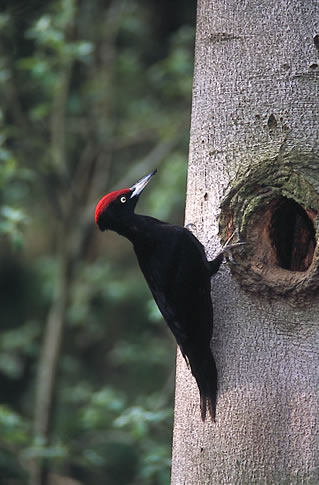 Schwarzspecht ■■
Schwarzspecht ■■ |
Automatically generated from Xeno-Canto recording.
Song: | ♫ |
| einfach rhythmisch | ||
| trommeln | ||
|
|
trommeln einfach rhythmisch fast medium (0-4 KHz) .
Drumming in lieu of song. Fast, constant.
Call: |
♫

|
|
|
einfach rhythmisch fast medium (1-5 KHz) .
|
♫

|
 Grauspecht ■■
Grauspecht ■■ |
trommeln einfach rhythmisch fast medium (0-4 KHz) .
Drumming in lieu of song. Fast, constant, somehow less harsh than great and middle spotted woodpeckers.
Song: |
♫

|
| nicht musikalisch | ||
|
|
nicht musikalisch slow medium (1-6 KHz) .
Woodpecker-like series of up to 25 slightly rising calls.
Song: |
♫

|
 Grünspecht ■■
Grünspecht ■■ |
nicht musikalisch slow medium (1-6 KHz) .
Spooky laugh.
Song: | ♫ |
| einfach rhythmisch | ||
| trommeln | ||
|
|
trommeln einfach rhythmisch fast low (1-3 KHz) .
Fast drumming, constant volume, longer than great spotted woodpecker's.
Call: |
♫

|
| nicht musikalisch | ||
| Krächzen, Mimikry | ||
|
|
Krächzen, Mimikry nicht musikalisch fast medium (1-5 KHz) .
Harsh crow-like call, or quiet questioning, 'grumbling', or plaintive cries.
Song: |
♫
|
|
|
Automatically generated from Xeno-Canto recording.
Call: | ♫ |
| einfach rhythmisch | ||
| Triller | ||
|
|
Triller einfach rhythmisch slow high (3-9 KHz) .
General: High-pitched, often descending (hhll), occasionally ascending. "Christina compares it to a ping-pong ball dropping. [In Januar singt die Kohlmeise als erster Vogel in Deutschland], dann kommt die Blaumeise dazu. Song: | ♫ |
| improvisiert melodisch | ||
| Schnörkel | ||
|
|
Schnörkel improvisiert melodisch slow low-high (1-7 KHz) .
Other: Gut zu erkennen ist die Amsel.
Sie singt melodiös, erklärt Heller, «zuerst flötend und dann gegen Schluss so schnirpslig».
Die Amsel singe gerne dort, wo sie gut gehört werde, etwa vor Hauswänden, die den Schall nicht schlucken.
Ich wollte schauen was schnirpslig heisst, aber diese ist diese einzige Verwendung, die Google kennt!
Der flötende Teil ist relativ tief, 1.5-3 KHz, der schnirpslige aber 2.5-7 KHz.
(Schnirpslig ist ein schones Wort das der Redner erfunden hat - Google findet nur diese eine Webseite mit dem Wort!) [Von der SRF Webseite:]
Song: | ♫ |
| einfach rhythmisch | ||
|
|
einfach rhythmisch slow medium (2-5 KHz) .
Monotones Zirpen. Hauptsächlich 2-5 KHz mit Übertönen.
Song: | ♫ |
|
| Automatically generated from Xeno-Canto recording. |
♫

|
|
| Automatically generated from Xeno-Canto recording. |
♫

|
| einfach rhythmisch | ||
 Seidenschwanz ❑❑
Seidenschwanz ❑❑ |
einfach rhythmisch fast high (5-7 KHz) .
|
♫

|
| stereotypisch melodisch | ||
 Karmingimpel ■❑
Karmingimpel ■❑ |
stereotypisch melodisch fast medium (2-6 KHz) .
|
♫

|
|
|
Automatically generated from Xeno-Canto recording.
Song: |
♫

|
| einfach rhythmisch | ||
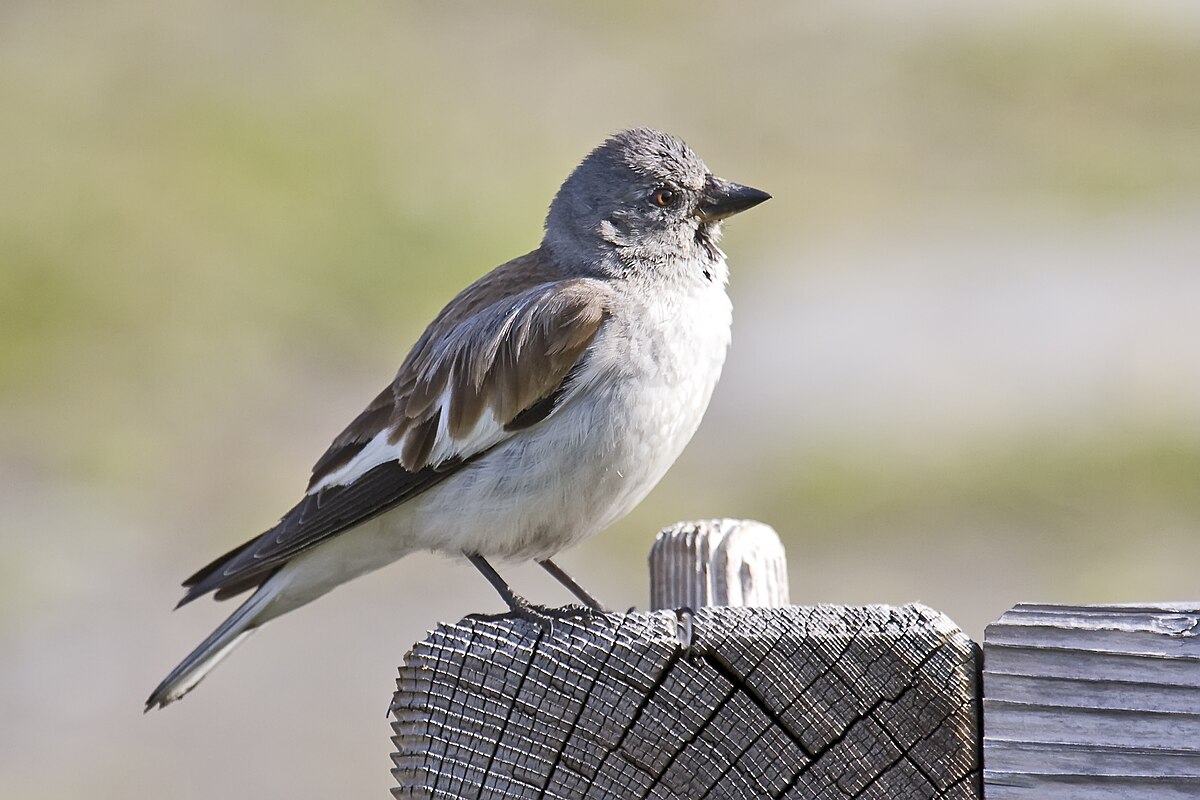 Schneesperling ■■
Schneesperling ■■ |
einfach rhythmisch slow medium (4-6 KHz) .
The XC song I downloaded is a faint chirping. Should follow up on song - most talk about calls.
Song: |
♫

|
|
|
einfach rhythmisch slow low (0-1 KHz) .
Two-noter
Song: |
♫

|
 Birkhuhn ■■
Birkhuhn ■■ | einfach rhythmisch slow low (0-1 KHz) . Song can be a rapid dove-like cooing that goes up, then repeats. |
♫

|
 Nebelkrähe ■■
Nebelkrähe ■■ |
Automatically generated from Xeno-Canto recording.
Song: |
♫

|
| nicht musikalisch | ||
| komisch | ||
 Saatkrähe ■■
Saatkrähe ■■ |
komisch nicht musikalisch fast low (0-3 KHz) .
Gurgling and rattling, but mostly calls
Song: |
♫

|
| improvisiert melodisch | ||
| aufsteigend, Mimikry, komisch | ||
|
|
aufsteigend, Mimikry, komisch improvisiert melodisch slow medium (1-5 KHz) .
Ich find ihren Gesang lustig, wenn sie einzel sind. In Gruppen machen sie einen ziemlichen Lärm. 2025 habe ich tolle Imitationen von Rabenkrähen und Amsel gehört.
Song: | ♫ |
| einfach rhythmisch | ||
|
|
einfach rhythmisch slow low (0-1 KHz) .
Song: |
♫

|
|
|
Automatically generated from Xeno-Canto recording.
Song: | ♫ |
| einnotig | ||
.jpg) Turteltaube ■■
Turteltaube ■■ |
einnotig slow low (1-3 KHz) .
Trilling coo.
Song: |
♫

|
|
| Automatically generated from Xeno-Canto recording. | ♫ |
|
|
Automatically generated from Xeno-Canto recording.
Call: | ♫ |
| nicht musikalisch | ||
| rasseln | ||
|
|
rasseln nicht musikalisch slow low (1-3 KHz) .
Familiar rattle
Song: | ♫ |
| einfach rhythmisch | ||
|
|
einfach rhythmisch slow medium (1-5 KHz) .
Said to have a repertoire as a species of 50 or more different songs, albeit simple ones, up to 10 per individual.
Females prefer a male with a large repertoire. One two-note song sounds like a squeaky bed.
Song: Nabu: Die erste Vogelart, die wir im Jahr hören, ist meistens die Kohlmeise mit ihrem typischen Läuten: "Zip Zäh" oder "Zip zip Zäh". [NABU Experte Lars Lachmann bei Deutschlandfunk Nova] | ♫ |
| einnotig | ||
|
|
einnotig fast medium (1-5 KHz) .
Song: Other: Song a simple series of loud notes. [Link] |
♫

|
| improvisiert melodisch | ||
| flöten | ||
|
|
flöten improvisiert melodisch fast high (3-9 KHz) .
General: Hoch aber auch bis tief, z.B. 2.9-7.7 KHz.
Wikipedia sagt, 'Der Gesang des Rotkehlchens ist mit 275 nachgewiesenen,
sich fortlaufend ändernden Motiven äußerst variabel.
[Ein einzelner Vogel lernt teilweise mehr als 30 verschiedene Strophen, sagteChristina Ebneter in BirdLife Feldornithologie-Kurs.]
Er wird mit vorgestreckter, das Rot betonender Brust, in der Regel von einer hohen Singwarte aus, vorgetragen. Er beginnt etwa eine Stunde vor Sonnenaufgang und ist noch eine gute Zeit nach Sonnenuntergang zu hören, hauptsächlich jedoch während der Dämmerung. Der Revieranzeigegesang wird normalerweise mit perlenden reinen Tönen und Trillern eingeleitet und fällt gegen Ende langsam ab; hohe metallische Töne werden oft dazwischen eingeschoben. Häufig sind in die 2,5 Sekunden langen Strophen auch undeutliche Imitationsphrasen eingelegt. Auf den Menschen wirkt der Reviergesang lieblich und schwermütig melodiös. Ist das Rotkehlchen hochgradig erregt, verdeutlicht es seinen Willen zur Eskalation durch übertönendes oder störendes Singen.' Ich habe in Ticino und Falera festgestellt, dass die Rotkehlchen immer noch singen und habe es nachher auch daheim im Zürcher Oberland gehört; das Ende des Singen Ende Juli ist anscheinend relativ. Seitdem weiss ich dass es eine der wenigen Vogelarten ist, die auch in Winter ein Territorium verteidigt...darum. Song: |
♫

|
| stereotypisch melodisch | ||
|
|
stereotypisch melodisch slow medium (1-5 KHz) .
General: A medium long phrase that slowly descends (I think of it bouncing down a staircase), then usually takes a
jump up before a final descent. Song: | ♫ |
|
|
stereotypisch melodisch slow low-high (2-8 KHz) .
3-note long M, pause, HL (somewhat falling)...Gim! Gim-peeel! Sounds a bit like a pirol.
Song: |
♫

|
| einfach rhythmisch | ||
|
|
einfach rhythmisch slow high (3-9 KHz) .
Seems to consist of 3 notes repeated randomly, occasionally just 2 notes.
Though NABU.de says they stop singing at the end of July, I do hear their 3-note song occasionally in October,
but just one or two repetitions.
Song: | ♫ |
| stereotypisch melodisch | ||
|
|
stereotypisch melodisch slow low-high (2-7 KHz) .
General: Usually just calls. This song is just a few chirpy slurs, sometimes rising-rising-falling. Song: |
♫

|
 Schafstelze ■■
Schafstelze ■■ |
stereotypisch melodisch slow high (3-9 KHz) .
Just a few notes, call seems to be common but song rare. Very short chirp of ~ 1 sec, long pause of 3 secs. At Wauwilermoos it seemed to be 'Twee tweetwee (higher note:) twee!'
Song: |
♫

|
|
| stereotypisch melodisch slow medium (2-5 KHz) . Sounds like house sparrow to me |
♫

|
| einfach rhythmisch | ||
|
|
einfach rhythmisch slow low-high (2-7 KHz) .
Monotones Zirpen, rauher als Haussperling. Hauptsächlich 2-7 KHz mit vielen Übertönen.
Song: |
♫

|
| stereotypisch melodisch | ||
| Mimikry | ||
|
|
Mimikry stereotypisch melodisch fast medium (2-4 KHz) .
Pretty short up-and-down song heard in Mallorca
Song: |
♫

|
| Triller | ||
|
|
Triller stereotypisch melodisch fast high (3-9 KHz) .
|
♫

|
|
|
Automatically generated from Xeno-Canto recording.
Song: | ♫ |
| stereotypisch melodisch | ||
|
|
stereotypisch melodisch fast high (4-8 KHz) .
General: High-pitched, repetitive but complex little tune, 3 seconds long with about 15 notes rising and falling, falling at the end, then 3 second pause. Song: |
♫

|
| nicht musikalisch | ||
| Raspel | ||
|
|
Raspel nicht musikalisch fast low-high (1-7 KHz) .
Fast raspy one-noter.
Song: |
♫

|
| stereotypisch melodisch | ||
|
|
stereotypisch melodisch fast low-high (2-7 KHz) .
Song: |
♫

|
|
|
stereotypisch melodisch fast medium (2-6 KHz) .
General: Squeaky with occasional buzzes, usually heard in flock. Song: |
♫

|
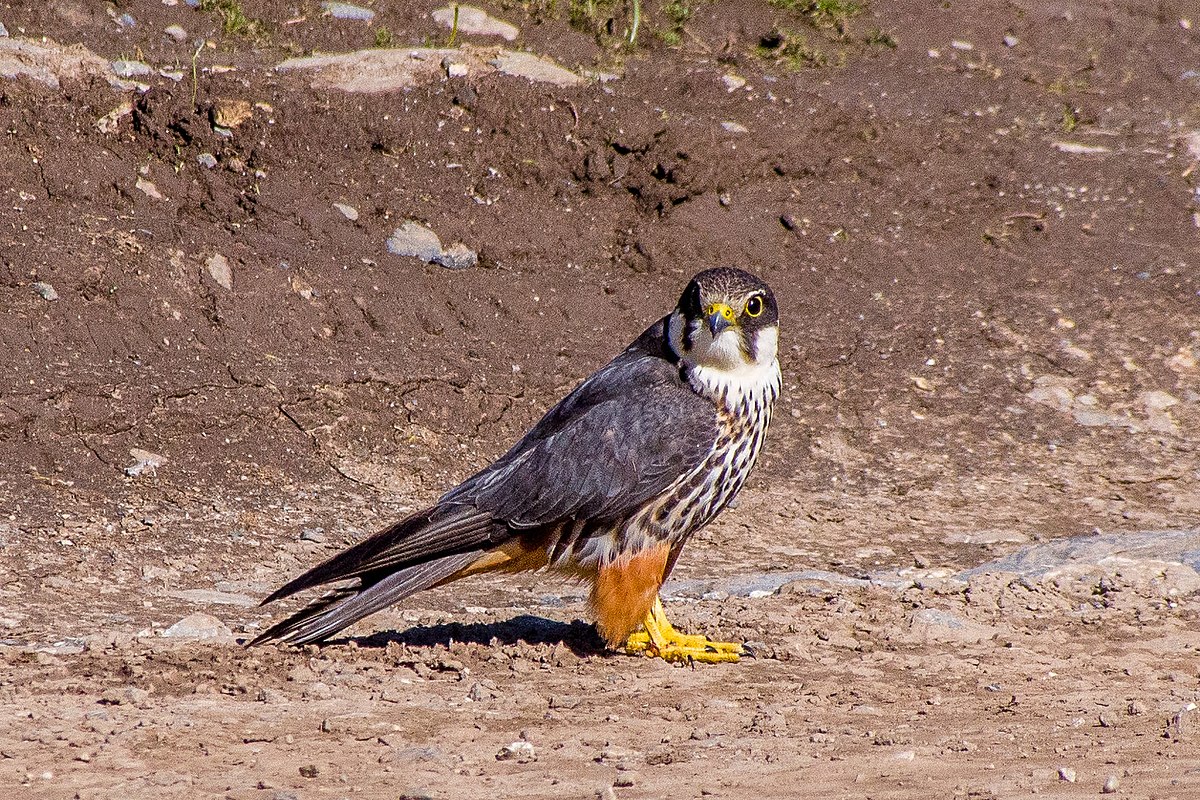 Baumfalke ■■
Baumfalke ■■ |
Automatically generated from Xeno-Canto recording.
Call: | ♫ |
|
|
Automatically generated from Xeno-Canto recording.
Call: |
♫

|
|
|
Automatically generated from Xeno-Canto recording.
Song: |
♫

|
| nicht musikalisch | ||
| rasseln | ||
|
| rasseln nicht musikalisch slow low (1-3 KHz) . Das berühmte Klappern. Im FOK-Kurs hat man erwähnt, dass dies ein Beispiel von einem 'Instrumentallaut' ist. | ♫ |
|
|
Automatically generated from Xeno-Canto recording.
Call: | ♫ |
|
| Automatically generated from Xeno-Canto recording. |
♫

|
| einfach rhythmisch | ||
| Triller | ||
|
|
Triller einfach rhythmisch fast high (5-8 KHz) .
Sid-sid-sid-sirrrr. 3 secs, then 5 secs pause. At bird-song.ch I hear a slow-fast one-noter, about 8 slow ones in 1.5 seconds, then a trill of 25 fast ones.
Song: |
♫

|
|
|
einfach rhythmisch slow high (6-8 KHz) .
High (6-8 KHz?) short sound repeated every half to 5 seconds.
Song: Gesang 'unauffällig' - zirp x 2-3, mal steigender tWIT |
♫

|
| improvisiert melodisch | ||
| Raspel, komisch | ||
|
|
Raspel, komisch improvisiert melodisch fast low-high (1-7 KHz) .
Wonderfully weird sequence of chirps, cheeps, growls. Elements often repeated twice. In a quiz, I mistook it for a starling. This recording reminds me of other water songbirds like the Marsh warbler and various reed warblers.
Song: |
♫

|
| Mimikry | ||
 Gelbspötter ■■
Gelbspötter ■■ |
Mimikry improvisiert melodisch fast low-high (2-10 KHz) .
Short bits 4-8 notes, sometimes with a little pause, overall a greenfinch feel. Some whoops, some chucks like a great tit, some bits like a house sparrow, even a meow. BirdLife Schweiz says full of vigor, includes some mis-tones and creaky calls; eBird says Song is fast, loud, and melodious with lots of mimicry.Can sing low (2k) or high (10k)
Song: |
♫

|
| stereotypisch melodisch | ||
|
|
stereotypisch melodisch fast high (3-10 KHz) .
Nice short melody, often with 2-note parts. Blackbird-like but little variation (though differs in dialect).
Song: |
♫

|
| improvisiert melodisch | ||
| Triller | ||
 Orpheusspötter ■■
Orpheusspötter ■■ | Triller improvisiert melodisch veryFast low-high (2-8 KHz) . Repeats bits 6-9 times, makes pauses, but also sings like mad with a distorted chirpy voice. Sometimes sings a descending trill that could be a giveaway. Can sing low (2k) or fairly high (8k) |
♫
|
|
|
Triller improvisiert melodisch fast high (3-8 KHz) .
Often one little phrase or even a single note repeated, a bit like a nightingale? Occasional figaro?
Song: |
♫

|
| einfach rhythmisch | ||
 Feldschwirl ■■
Feldschwirl ■■ |
einfach rhythmisch fast high (5-8 KHz) .
Buzzing like an insect or machinery. BirdLife Schweiz says like a grasshopper (which is after all the English name).
Song: |
♫

|
 Ziegenmelker ■■
Ziegenmelker ■■ |
einfach rhythmisch fast medium (2-4 KHz) .
Buzzing like machinery or a (BirdID says) a cricket. Changes pitch at times.
Song: |
♫

|
|
|
einfach rhythmisch slow medium (1-5 KHz) .
BirdID says Song a primitive, plaintive series of short phrases, often with only 1-2 syllables (I heard 2-3 in Amden, sometimes chirpy, sometimes less musical).
Song: |
♫

|
|
| Automatically generated from Xeno-Canto recording. | ♫ |
 Singammer
Singammer |
Automatically generated from Xeno-Canto recording.
Song: | ♫ |
|
| Automatically generated from Xeno-Canto recording. |
♫

|
|
| Automatically generated from Xeno-Canto recording. |
♫

|
|
|
Automatically generated from Xeno-Canto recording.
Call: | ♫ |
|
|
Automatically generated from Xeno-Canto recording.
Call: | ♫ |
|
|
Automatically generated from Xeno-Canto recording.
Call: | ♫ |
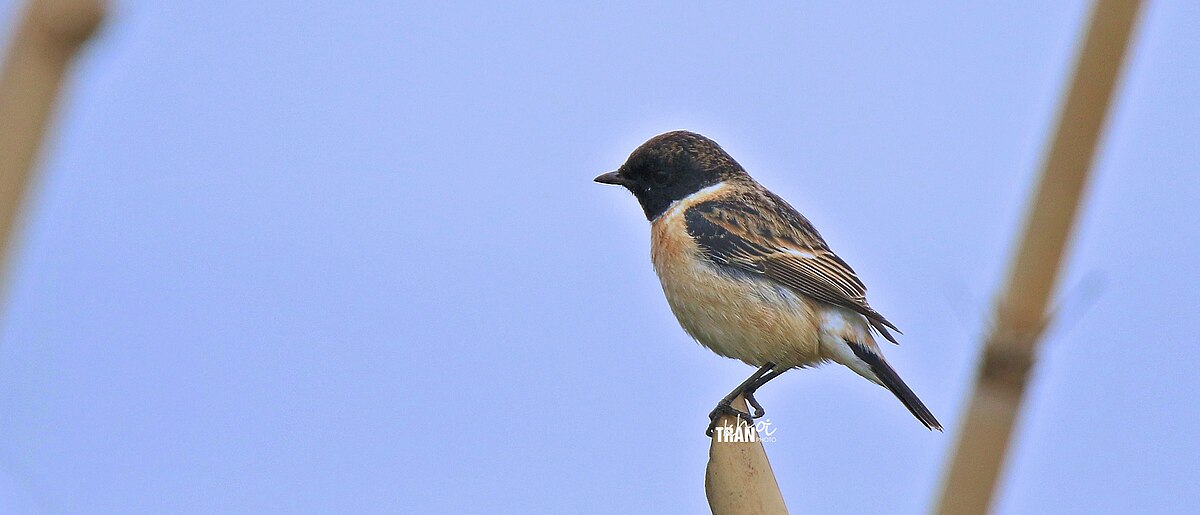 Afrikanische Schwarzkehlchen
Afrikanische Schwarzkehlchen | Automatically generated from Xeno-Canto recording. |
♫

|
|
| Automatically generated from Xeno-Canto recording. | ♫ |
|
|
Automatically generated from Xeno-Canto recording.
Call: | ♫ |
|
|
Automatically generated from Xeno-Canto recording.
Song: | ♫ |
|
| Automatically generated from Xeno-Canto recording. | ♫ |
|
|
Automatically generated from Xeno-Canto recording.
Call: |
♫

|
|
| Automatically generated from Xeno-Canto recording. |
♫

|
 Gelbschnabel-Sturmtaucher
Gelbschnabel-Sturmtaucher | Automatically generated from Xeno-Canto recording. | ♫ |
|
| Automatically generated from Xeno-Canto recording. |
♫

|
 Wanderfalke ■■
Wanderfalke ■■ |
Automatically generated from Xeno-Canto recording.
Call: |
♫

|
|
|
Automatically generated from Xeno-Canto recording.
Song: |
♫

|
|
| Automatically generated from Xeno-Canto recording. |
♫

|
|
| Automatically generated from Xeno-Canto recording. |
♫

|
|
| Automatically generated from Xeno-Canto recording. |
♫

|
|
| Automatically generated from Xeno-Canto recording. |
♫

|
|
|
Automatically generated from Xeno-Canto recording.
Song: | ♫ |
|
| Automatically generated from Xeno-Canto recording. | ♫ |
|
|
Automatically generated from Xeno-Canto recording.
Call: |
♫

|
|
| Automatically generated from Xeno-Canto recording. | ♫ |
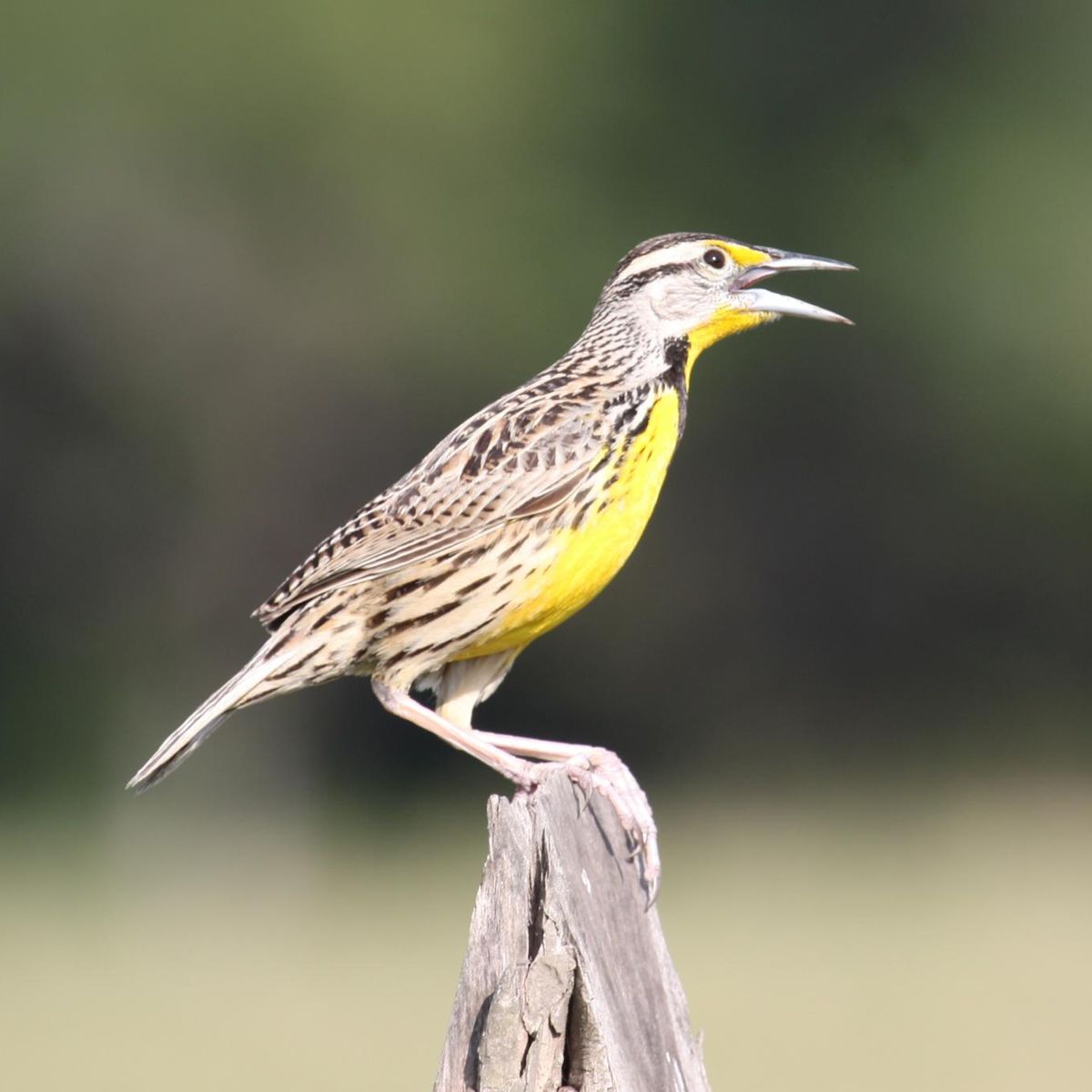 Sturnella magna
Sturnella magna | Automatically generated from Xeno-Canto recording. | ♫ |
|
| Automatically generated from Xeno-Canto recording. | ♫ |
|
| Automatically generated from Xeno-Canto recording. | ♫ |
|
| Automatically generated from Xeno-Canto recording. |
♫

|
|
| Automatically generated from Xeno-Canto recording. | ♫ |
 Myiarchus crinitus
Myiarchus crinitus | Automatically generated from Xeno-Canto recording. | ♫ |
|
| Automatically generated from Xeno-Canto recording. | ♫ |
|
| Automatically generated from Xeno-Canto recording. | ♫ |
|
| Automatically generated from Xeno-Canto recording. | ♫ |
|
| Automatically generated from Xeno-Canto recording. | ♫ |
|
| Automatically generated from Xeno-Canto recording. | ♫ |
 Rotaugenvireo
Rotaugenvireo | Automatically generated from Xeno-Canto recording. | ♫ |
|
| Automatically generated from Xeno-Canto recording. | ♫ |
|
| Automatically generated from Xeno-Canto recording. | ♫ |
|
| Automatically generated from Xeno-Canto recording. | ♫ |
 Kapuzenwaldsänger
Kapuzenwaldsänger | Automatically generated from Xeno-Canto recording. | ♫ |
|
| Automatically generated from Xeno-Canto recording. | ♫ |
|
| Automatically generated from Xeno-Canto recording. | ♫ |
 Meisenwaldsänger
Meisenwaldsänger | Automatically generated from Xeno-Canto recording. | ♫ |
|
| Automatically generated from Xeno-Canto recording. | ♫ |
|
| Automatically generated from Xeno-Canto recording. | ♫ |
|
| Automatically generated from Xeno-Canto recording. | ♫ |
 Weißbauch-Phoebetyrann
Weißbauch-Phoebetyrann | Automatically generated from Xeno-Canto recording. | ♫ |
 Rotspottdrossel
Rotspottdrossel | Automatically generated from Xeno-Canto recording. | ♫ |
|
| Automatically generated from Xeno-Canto recording. | ♫ |
|
| Automatically generated from Xeno-Canto recording. | ♫ |
|
| Automatically generated from Xeno-Canto recording. | ♫ |
|
| Automatically generated from Xeno-Canto recording. | ♫ |
|
| Automatically generated from Xeno-Canto recording. | ♫ |
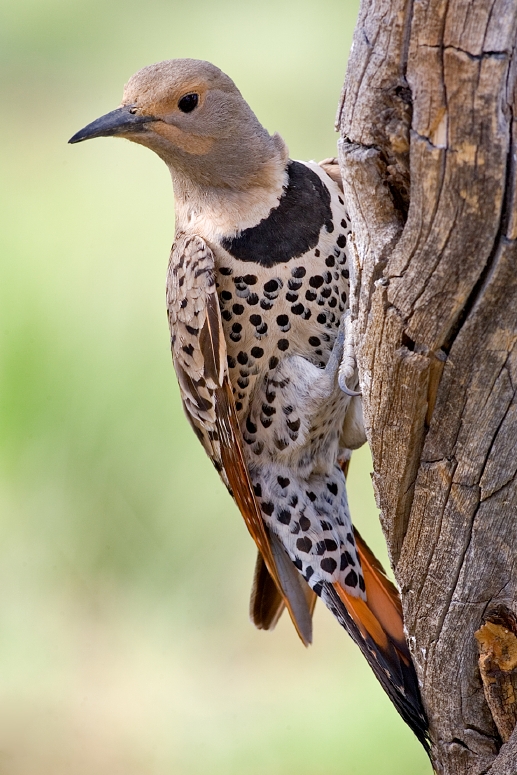 Goldspecht
Goldspecht | Automatically generated from Xeno-Canto recording. | ♫ |
| Kanarenmeise | Automatically generated from Xeno-Canto recording. | ♫ |
 Seidensänger
Seidensänger |
Automatically generated from Xeno-Canto recording.
Song: | ♫ |
|
| Automatically generated from Xeno-Canto recording. | ♫ |
|
|
Automatically generated from Xeno-Canto recording.
Song: |
♫

|
 Zwergohreule ■❑
Zwergohreule ■❑ |
Automatically generated from Xeno-Canto recording.
Song: | ♫ |
|
| Automatically generated from Xeno-Canto recording. |
♫

|
 Provencegrasmücke
Provencegrasmücke |
Automatically generated from Xeno-Canto recording.
Song: | ♫ |
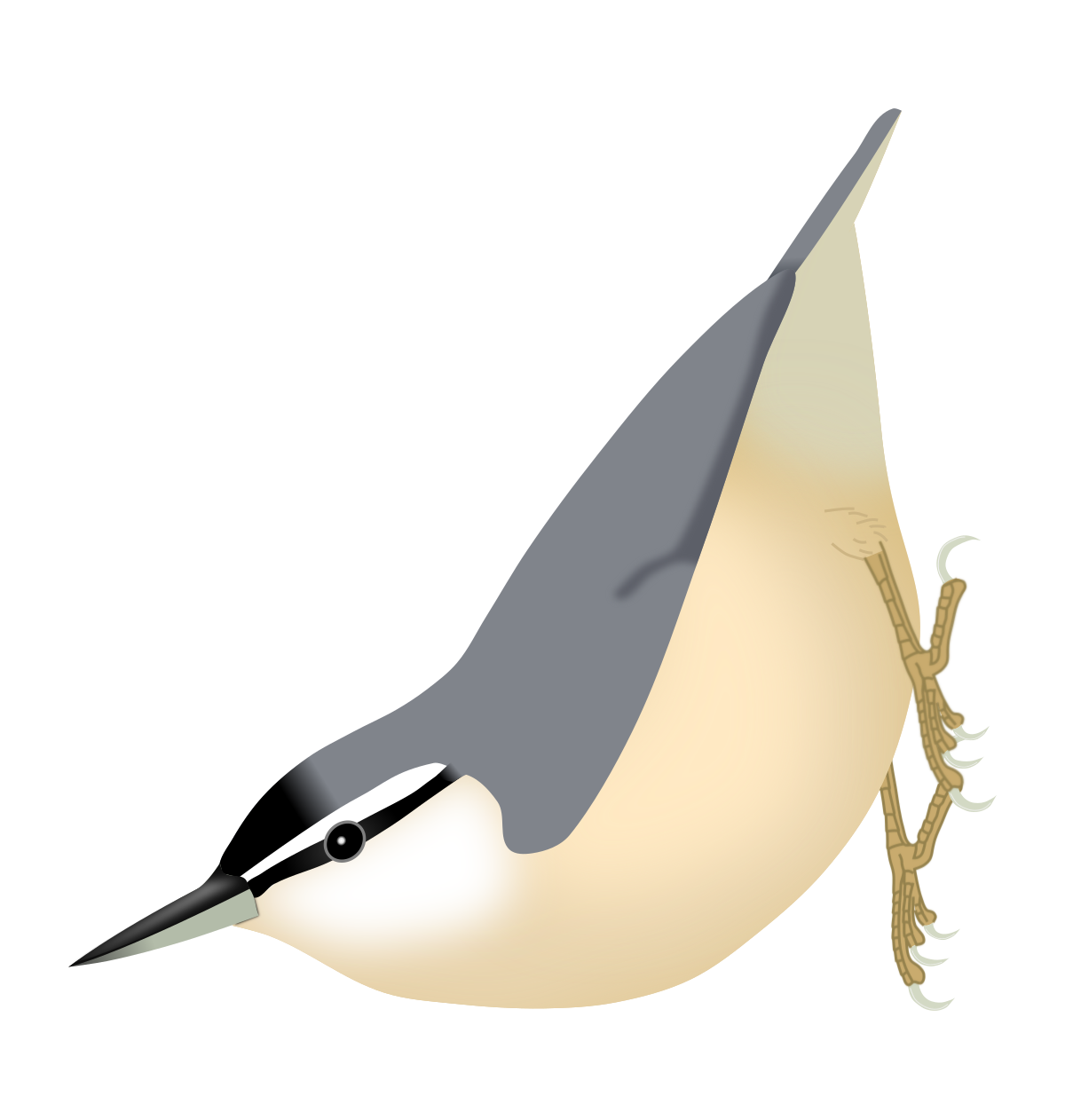 Kabylenkleiber
Kabylenkleiber | Automatically generated from Xeno-Canto recording. | ♫ |
 Steinlerche
Steinlerche | Automatically generated from Xeno-Canto recording. | ♫ |
|
| Automatically generated from Xeno-Canto recording. |
♫

|
|
| Automatically generated from Xeno-Canto recording. |
♫

|
 Junco hyemalis
Junco hyemalis | Automatically generated from Xeno-Canto recording. | ♫ |
|
| Automatically generated from Xeno-Canto recording. |
♫

|
|
| Automatically generated from Xeno-Canto recording. | ♫ |
|
| Automatically generated from Xeno-Canto recording. | ♫ |
|
| Automatically generated from Xeno-Canto recording. |
♫

|
|
| Automatically generated from Xeno-Canto recording. | ♫ |
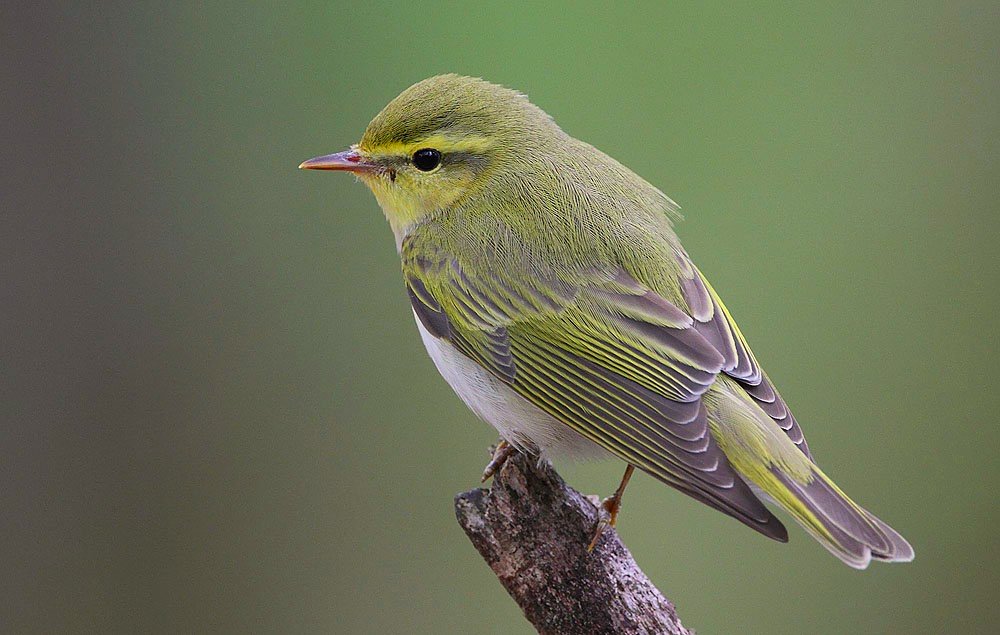 Rhadina sibilatrix
Rhadina sibilatrix | Automatically generated from Xeno-Canto recording. |
♫

|
|
| Automatically generated from Xeno-Canto recording. |
♫

|
|
| Automatically generated from Xeno-Canto recording. |
♫

|
|
| Automatically generated from Xeno-Canto recording. |
♫

|
|
| Automatically generated from Xeno-Canto recording. |
♫

|
|
| Automatically generated from Xeno-Canto recording. |
♫

|
|
| Automatically generated from Xeno-Canto recording. |
♫

|
|
| Automatically generated from Xeno-Canto recording. |
♫

|
|
| Automatically generated from Xeno-Canto recording. |
♫

|
|
| Automatically generated from Xeno-Canto recording. | ♫ |
|
| Automatically generated from Xeno-Canto recording. |
♫

|
|
| Automatically generated from Xeno-Canto recording. |
♫

|
|
| Automatically generated from Xeno-Canto recording. | ♫ |
|
| Automatically generated from Xeno-Canto recording. | ♫ |
|
| Automatically generated from Xeno-Canto recording. |
♫

|
|
| Automatically generated from Xeno-Canto recording. |
♫

|
|
| Automatically generated from Xeno-Canto recording. | ♫ |
|
| Automatically generated from Xeno-Canto recording. | ♫ |
|
| Automatically generated from Xeno-Canto recording. |
♫

|
|
| Automatically generated from Xeno-Canto recording. |
♫

|
|
| Automatically generated from Xeno-Canto recording. |
♫

|
|
| Automatically generated from Xeno-Canto recording. |
♫

|
|
| Automatically generated from Xeno-Canto recording. |
♫

|
|
| Automatically generated from Xeno-Canto recording. |
♫

|
|
| Automatically generated from Xeno-Canto recording. |
♫

|
 Psilopogon haemacephalus
Psilopogon haemacephalus | Automatically generated from Xeno-Canto recording. |
♫

|
|
| Automatically generated from Xeno-Canto recording. |
♫

|
|
| Automatically generated from Xeno-Canto recording. |
♫

|
|
| Automatically generated from Xeno-Canto recording. |
♫

|
|
| Automatically generated from Xeno-Canto recording. |
♫

|
|
| Automatically generated from Xeno-Canto recording. |
♫

|
|
| Automatically generated from Xeno-Canto recording. |
♫

|
|
| Automatically generated from Xeno-Canto recording. |
♫

|
|
| Automatically generated from Xeno-Canto recording. |
♫

|
|
| Automatically generated from Xeno-Canto recording. |
♫

|
|
| Automatically generated from Xeno-Canto recording. |
♫

|
|
| Automatically generated from Xeno-Canto recording. |
♫

|
Übung
♫ Lösung Kabylenkleiber ♫ Lösung
Waldlaubsänger XC727564 - Wood Warbler - Phylloscopus sibilatrix - song.
♫
Lösung
Carolinazaunkönig Carolina wren sings Figaro.
♫
Lösung
Waldlaubsänger XC727564 - Wood Warbler - Phylloscopus sibilatrix - song.
♫
Lösung
Carolinazaunkönig Carolina wren sings Figaro.
♫
 Lösung
Wanderbaumelster XC810503 - Rufous Treepie - Dendrocitta vagabunda - pir-ol-like song - Bardiya National Park, Bardiya, Lumbini Province, Nepal.
♫
Lösung
Blaumeise Blaumeise h-ll, in Zelgli, Fehraltorf.
♫
Lösung
Wanderbaumelster XC810503 - Rufous Treepie - Dendrocitta vagabunda - pir-ol-like song - Bardiya National Park, Bardiya, Lumbini Province, Nepal.
♫
Lösung
Blaumeise Blaumeise h-ll, in Zelgli, Fehraltorf.
♫
 Lösung
Saatkrähe XC749507 - Rook - Corvus frugilegus - song.
♫
Lösung
Saatkrähe XC749507 - Rook - Corvus frugilegus - song.
♫
 Lösung
Saxicola stejnegeri XC405064 - Stejneger's Stonechat - Saxicola stejnegeri - song - Muraviovka Park, Russian Federation.
♫
Lösung
Waldkauz Waldkauz in Carona.
♫
Lösung
Saxicola stejnegeri XC405064 - Stejneger's Stonechat - Saxicola stejnegeri - song - Muraviovka Park, Russian Federation.
♫
Lösung
Waldkauz Waldkauz in Carona.
♫
 Lösung
Rotohrbülbül XC776525 - Red-whiskered Bulbul - Pycnonotus jocosus pattani.
♫
Lösung
Rotohrbülbül XC776525 - Red-whiskered Bulbul - Pycnonotus jocosus pattani.
♫
 Lösung
Waldbaumläufer XC656422 - Eurasian Treecreeper - Certhia familiaris - song, recorded in Sweden.
♫
Lösung
Myiarchus crinitus
♫
Lösung
Waldbaumläufer XC656422 - Eurasian Treecreeper - Certhia familiaris - song, recorded in Sweden.
♫
Lösung
Myiarchus crinitus
♫
 Lösung
Girlitz XC637940 - European Serin - Serinus serinus - song, recorded in France.
♫
Lösung
Girlitz XC637940 - European Serin - Serinus serinus - song, recorded in France.
♫
 Lösung
Teichhuhn XC946631 - Common Moorhen call, like a quack - Gallinula chloropus.
♫
Lösung
Teichhuhn XC946631 - Common Moorhen call, like a quack - Gallinula chloropus.
♫
 Lösung
Wintergoldhähnchen Wintergoldhähnchen XC475114-Regulus regulus - Goldcrest song.
♫
Lösung
Kernbeisser Birdweather-Hawfinch.
♫
Lösung
Mönchsgrasmücke
♫
Lösung
Wintergoldhähnchen Wintergoldhähnchen XC475114-Regulus regulus - Goldcrest song.
♫
Lösung
Kernbeisser Birdweather-Hawfinch.
♫
Lösung
Mönchsgrasmücke
♫
 Lösung
Felsentaube XC661807 - Rock Dove call - Columba livia.
♫
Lösung
Felsentaube XC661807 - Rock Dove call - Columba livia.
♫
 Lösung
Zaunammer XC758664 - Cirl Bunting - Emberiza cirlus - one-note song recorded in Spain.
♫
Lösung
Zaunammer XC758664 - Cirl Bunting - Emberiza cirlus - one-note song recorded in Spain.
♫
 Lösung
Stieglitz XC638230 - European Goldfinch - Cardülis cardülis.
♫
Lösung
Kapuzenwaldsänger
♫
Lösung
Rotflügelstärling
♫
Lösung
Stieglitz XC638230 - European Goldfinch - Cardülis cardülis.
♫
Lösung
Kapuzenwaldsänger
♫
Lösung
Rotflügelstärling
♫
 Lösung
Graukopfkiebitz XC114440 - Grey-headed Lapwing - Vanellus cinereus - call, Inner Mongolia, nr Tumuji Town, China.
♫
Lösung
Graukopfkiebitz XC114440 - Grey-headed Lapwing - Vanellus cinereus - call, Inner Mongolia, nr Tumuji Town, China.
♫
 Lösung
Kolkrabe XC779842 - Northern Raven - Corvus corax corax - call recorded in Sweden.
♫
Lösung
Kolkrabe XC779842 - Northern Raven - Corvus corax corax - call recorded in Sweden.
♫
 Lösung
Doppelhornvogel XC819734 - Great Hornbill - Buceros bicornis - song, sounds like a frog.
♫
Lösung
Schnäpperwaldsänger
♫
Lösung
Doppelhornvogel XC819734 - Great Hornbill - Buceros bicornis - song, sounds like a frog.
♫
Lösung
Schnäpperwaldsänger
♫
 Lösung
Kleinspecht XC552636 Kleinspecht drumming.
♫
Lösung
Schreiadler
♫
Lösung
Kleinspecht XC552636 Kleinspecht drumming.
♫
Lösung
Schreiadler
♫
 Lösung
Feldlerche XC685846 - Eurasian Skylark - Alauda arvensis - song, recorded in France.
♫
Lösung
Feldlerche XC685846 - Eurasian Skylark - Alauda arvensis - song, recorded in France.
♫
 Lösung
Mittelspecht Mittelspecht bei Seegräben, heavily edited with noise reduction, hipass, etc.
♫
Lösung
Hausgimpel
♫
Lösung
Mittelspecht Mittelspecht bei Seegräben, heavily edited with noise reduction, hipass, etc.
♫
Lösung
Hausgimpel
♫
 Lösung
Braunkehlchen XC775379 - Whinchat - Saxicola rubetra - song, recorded in Sweden.
♫
Lösung
Contopus virens
♫
Lösung
Braunkehlchen XC775379 - Whinchat - Saxicola rubetra - song, recorded in Sweden.
♫
Lösung
Contopus virens
♫
 Lösung
Gartenbaumläufer XC625133 - Short-toed Treecreeper - Certhia brachydactyla - song.
♫
Lösung
Weidenmeise
♫
Lösung
Amsel Repetitiver, einfallsloser Amsel den ich für einen Misteldrossel gehalten habe, dazu eine Kohlemeise der lmh singt und ich mit einer Tannen-meise gewechselt habe.
♫
Lösung
Vireo griseus
♫
Lösung
Haubentaucher
♫
Lösung
Gartenbaumläufer XC625133 - Short-toed Treecreeper - Certhia brachydactyla - song.
♫
Lösung
Weidenmeise
♫
Lösung
Amsel Repetitiver, einfallsloser Amsel den ich für einen Misteldrossel gehalten habe, dazu eine Kohlemeise der lmh singt und ich mit einer Tannen-meise gewechselt habe.
♫
Lösung
Vireo griseus
♫
Lösung
Haubentaucher
♫
 Lösung
Blässhuhn XC841364 - Eurasian Coot song - Fulica atra.
♫
Lösung
Blässhuhn XC841364 - Eurasian Coot song - Fulica atra.
♫
 Lösung
Rotdrossel XC320315 - Redwing - Turdus iliacus.
♫
Lösung
Zilpzalp
♫
Lösung
Rotdrossel XC320315 - Redwing - Turdus iliacus.
♫
Lösung
Zilpzalp
♫
 Lösung
Tannenhäher XC641465 - Spotted Nutcracker - Nucifraga caryocatactes - song is a series of calls.
♫
Lösung
Tannenhäher XC641465 - Spotted Nutcracker - Nucifraga caryocatactes - song is a series of calls.
♫
 Lösung
Wiesenpieper XC722919 - Meadow Pipit - Anthus pratensis - song.
♫
Lösung
Wiesenpieper XC722919 - Meadow Pipit - Anthus pratensis - song.
♫
 Lösung
Bekassine XC812599 - Common Snipe song, one note, 4x per sec - Gallinago gallinago.
♫
Lösung
Alpensegler
♫
Lösung
Bekassine XC812599 - Common Snipe song, one note, 4x per sec - Gallinago gallinago.
♫
Lösung
Alpensegler
♫
 Lösung
Sperber XC818384 - Eurasian Sparrowhawk - Accipiter nisus - call, Brandenburg, Germany.
♫
Lösung
Grünfink
♫
Lösung
Sperber XC818384 - Eurasian Sparrowhawk - Accipiter nisus - call, Brandenburg, Germany.
♫
Lösung
Grünfink
♫
 Lösung
Wendehals XC800958 - Eurasian Wryneck - Jynx torquilla.
♫
Lösung
Wendehals XC800958 - Eurasian Wryneck - Jynx torquilla.
♫
 Lösung
Gimpel XC637392 - Eurasian Bullfinch - Pyrrhula pyrrhula - song, recorded in France.
♫
Lösung
Buchfink Fehraltorf - Buchfink Gesang-Variante, steigt am Schluss - mmmmmmmmLlhH.
♫
Lösung
Säbelschnäbler
♫
Lösung
Gimpel XC637392 - Eurasian Bullfinch - Pyrrhula pyrrhula - song, recorded in France.
♫
Lösung
Buchfink Fehraltorf - Buchfink Gesang-Variante, steigt am Schluss - mmmmmmmmLlhH.
♫
Lösung
Säbelschnäbler
♫
 Lösung
Bartsittich XC35744 - Red-breasted Parakeet - Psittacula alexandri - song - Cat Tien National Park, Cochinchina, Vietnam.
♫
Lösung
Bartsittich XC35744 - Red-breasted Parakeet - Psittacula alexandri - song - Cat Tien National Park, Cochinchina, Vietnam.
♫
 Lösung
Rauchschwalbe XC768452 - Barn Swallow - Hirundo rustica - song recorded in Denmark, rare recording with just a single bird.
♫
Lösung
Rauchschwalbe XC768452 - Barn Swallow - Hirundo rustica - song recorded in Denmark, rare recording with just a single bird.
♫
 Lösung
Sumpfrohrsänger XC728884 - Marsh Warbler - Acrocephalus palustris - song.
♫
Lösung
Carolinataube
♫
Lösung
Amerikanerkrähe MerlinSoundId American crow, Carolina wren, Blue jay, Northern cardinal - Annandale, Virginia.
♫
Lösung
Sumpfrohrsänger XC728884 - Marsh Warbler - Acrocephalus palustris - song.
♫
Lösung
Carolinataube
♫
Lösung
Amerikanerkrähe MerlinSoundId American crow, Carolina wren, Blue jay, Northern cardinal - Annandale, Virginia.
♫
 Lösung
Raubwürger XC30172 - Great Grey Shrike - Lanius excubitor königi - three-note-song lmh recorded in Spain.
♫
Lösung
Raubwürger XC30172 - Great Grey Shrike - Lanius excubitor königi - three-note-song lmh recorded in Spain.
♫
 Lösung
Eisvogel XC839045 - Common Kingfisher - Alcedo atthis - song - Viana do Castelo, Portugal.
♫
Lösung
Flussseeschwalbe
♫
Lösung
Eisvogel XC839045 - Common Kingfisher - Alcedo atthis - song - Viana do Castelo, Portugal.
♫
Lösung
Flussseeschwalbe
♫
 Lösung
Trauerschnäpper XC723965 - European Pied Flycatcher - Ficedula hypoleuca - song.
♫
Lösung
Anthreptes malacensis XC784603 - Brown-throated Sunbird - Anthreptes malacensis - song h,l, h,l, - Kum Nang Phaya Resort and environment, Thailand.
♫
Lösung
Trauerschnäpper XC723965 - European Pied Flycatcher - Ficedula hypoleuca - song.
♫
Lösung
Anthreptes malacensis XC784603 - Brown-throated Sunbird - Anthreptes malacensis - song h,l, h,l, - Kum Nang Phaya Resort and environment, Thailand.
♫
 Lösung
Pycnonotus finlaysoni XC298504 - Stripe-throated Bulbul - Pycnonotus finlaysoni - song, Thailand.
♫
Lösung
Pycnonotus finlaysoni XC298504 - Stripe-throated Bulbul - Pycnonotus finlaysoni - song, Thailand.
♫
 Lösung
Turteltaube XC728296 - European Turtle Dove - Streptopelia turtur.
♫
Lösung
Zonotrichia albicollis
♫
Lösung
Turteltaube XC728296 - European Turtle Dove - Streptopelia turtur.
♫
Lösung
Zonotrichia albicollis
♫
 Lösung
Acridotheres tristis XC729094 - Common Myna - Acridotheres tristis tristis.
♫
Lösung
Acridotheres tristis XC729094 - Common Myna - Acridotheres tristis tristis.
♫
 Lösung
Sommergoldhähnchen XC769178 - Common Firecrest - Regulus ignicapilla - song recorded in the Netherlands.
♫
Lösung
Sommergoldhähnchen XC769178 - Common Firecrest - Regulus ignicapilla - song recorded in the Netherlands.
♫
 Lösung
Karmingimpel XC654449 - Common Rosefinch - Carpodacus erythrinus - song.
♫
Lösung
Ringeltaube
♫
Lösung
Karmingimpel XC654449 - Common Rosefinch - Carpodacus erythrinus - song.
♫
Lösung
Ringeltaube
♫
 Lösung
Afrikanische Schwarzkehlchen XC633658 - European Stonechat - Saxicola rubicola - song.
♫
Lösung
Rotaugenvireo
♫
Lösung
Afrikanische Schwarzkehlchen XC633658 - European Stonechat - Saxicola rubicola - song.
♫
Lösung
Rotaugenvireo
♫
 Lösung
Rhadina sibilatrix XC727564 - Wood Warbler - Phylloscopus sibilatrix - song.
♫
Lösung
Walddrossel
♫
Lösung
Rhadina sibilatrix XC727564 - Wood Warbler - Phylloscopus sibilatrix - song.
♫
Lösung
Walddrossel
♫
 Lösung
Birkhuhn XC731604 - Black Grouse - Lyrurus tetrix.
♫
Lösung
Steinlerche
♫
Lösung
Gartenspottdrossel MerlinSoundId Northern mockingbird - New Jersey.
♫
Lösung
Tannenmeise Eichwäldli, tannenmeise lmhlmhlm, gartenbaumläufer rufe.
♫
Lösung
Schwarzmilan
♫
Lösung
Birkhuhn XC731604 - Black Grouse - Lyrurus tetrix.
♫
Lösung
Steinlerche
♫
Lösung
Gartenspottdrossel MerlinSoundId Northern mockingbird - New Jersey.
♫
Lösung
Tannenmeise Eichwäldli, tannenmeise lmhlmhlm, gartenbaumläufer rufe.
♫
Lösung
Schwarzmilan
♫
 Lösung
Prinia inornata XC891889 - Plain Prinia - Prinia inornata herberti - chirpy song - Phnom Krom rice fields, Cambodia.
♫
Lösung
Prinia inornata XC891889 - Plain Prinia - Prinia inornata herberti - chirpy song - Phnom Krom rice fields, Cambodia.
♫
 Lösung
Grauammer XC632949 - Corn Bunting - Emberiza calandra - song.
♫
Lösung
Grauammer XC632949 - Corn Bunting - Emberiza calandra - song.
♫
 Lösung
Schilfrohrsänger XC661577 - Sedge Warbler - Acrocephalus schönobänus - song.
♫
Lösung
Schilfrohrsänger XC661577 - Sedge Warbler - Acrocephalus schönobänus - song.
♫
 Lösung
Goldammer XC29721 - Yellowhammer - Emberiza citrinella - song with XlB dialect, recorded in Cudrefin, Switzerland.
♫
Lösung
Goldammer XC29721 - Yellowhammer - Emberiza citrinella - song with XlB dialect, recorded in Cudrefin, Switzerland.
♫
 Lösung
Rubinkehlchen XC843510 - Siberian Rubythroat - Calliope calliope - song, Vientiane Prefecture, Laos.
♫
Lösung
Rubinkehlchen XC843510 - Siberian Rubythroat - Calliope calliope - song, Vientiane Prefecture, Laos.
♫
 Lösung
Kuckuck XC801215 - Common Cuckoo - Cuculus canorus.
♫
Lösung
Kuckuck XC801215 - Common Cuckoo - Cuculus canorus.
♫
 Lösung
Schlangenweihe XC809894 - Crested Serpent Eagle - Spilornis cheela - song - Lumbini Province, Nepal.
♫
Lösung
Baumfalke MerlinBirdId meint Baumfalke bei Rosinli, Hittnau.
♫
Lösung
Schlangenweihe XC809894 - Crested Serpent Eagle - Spilornis cheela - song - Lumbini Province, Nepal.
♫
Lösung
Baumfalke MerlinBirdId meint Baumfalke bei Rosinli, Hittnau.
♫
 Lösung
Erlenzeisig XC714393 - Eurasian Siskin - Spinus spinus.
♫
Lösung
Erlenzeisig XC714393 - Eurasian Siskin - Spinus spinus.
♫
 Lösung
Kleiber Is the brevity what makes it a song, whereas calls seem to go on endlessly? XC777051 - Eurasian Nuthatch - Sitta europäa, recorded in France and designated as song - a series of 5-6 whoops, pause and repeat, hard for me to distinguish from a ca-ll.
♫
Lösung
Kleiber Is the brevity what makes it a song, whereas calls seem to go on endlessly? XC777051 - Eurasian Nuthatch - Sitta europäa, recorded in France and designated as song - a series of 5-6 whoops, pause and repeat, hard for me to distinguish from a ca-ll.
♫
 Lösung
Sumpfmeise XC727754 - Marsh Tit - Poecile palustris.
♫
Lösung
Sumpfmeise XC727754 - Marsh Tit - Poecile palustris.
♫
 Lösung
Fichtenkreuzschnabel XC775798 - Red Crossbill - Loxia curvirostra - song.
♫
Lösung
Fichtenkreuzschnabel XC775798 - Red Crossbill - Loxia curvirostra - song.
♫
 Lösung
Zitronenzeisig XC372554 - Citril Finch - Cardülis citrinella - song.
♫
Lösung
Zitronenzeisig XC372554 - Citril Finch - Cardülis citrinella - song.
♫
 Lösung
Anhinga melanogaster XC311148 - Oriental Darter - Anhinga melanogaster - quacky call - Tissamaharama area, Sri Lanka.
♫
Lösung
Singammer Morning at Cherrywood Court - northern cardinal, gray catbirds, song sparrow.
♫
Lösung
Kormoran
♫
Lösung
Blaumückenfänger
♫
Lösung
Anhinga melanogaster XC311148 - Oriental Darter - Anhinga melanogaster - quacky call - Tissamaharama area, Sri Lanka.
♫
Lösung
Singammer Morning at Cherrywood Court - northern cardinal, gray catbirds, song sparrow.
♫
Lösung
Kormoran
♫
Lösung
Blaumückenfänger
♫
 Lösung
Italiensperling XC729736 - Italian Sparrow - Passer italiae - song recorded in Italy.
♫
Lösung
Gartenrotschwanz Common redstart an hour before dawn at Casa Egner, Locarno-Muralto.
♫
Lösung
Italiensperling XC729736 - Italian Sparrow - Passer italiae - song recorded in Italy.
♫
Lösung
Gartenrotschwanz Common redstart an hour before dawn at Casa Egner, Locarno-Muralto.
♫
 Lösung
Psilopogon haemacephalus XC857059 - Coppersmith Barbet - Psilopogon hämacephalus indicus - song but just one repeated note - Chang Wat Nonthaburi, Thailand.
♫
Lösung
Psilopogon haemacephalus XC857059 - Coppersmith Barbet - Psilopogon hämacephalus indicus - song but just one repeated note - Chang Wat Nonthaburi, Thailand.
♫
 Lösung
Cisticola exilis XC746858 - Golden-headed Cisticola - Cisticola exilis equicaudatus - song, Vientiane Prefecture, Laos.
♫
Lösung
Gänsesäger
♫
Lösung
Cisticola exilis XC746858 - Golden-headed Cisticola - Cisticola exilis equicaudatus - song, Vientiane Prefecture, Laos.
♫
Lösung
Gänsesäger
♫
 Lösung
Gartengrasmücke XC728379 - Garden Warbler - Sylvia borin - song.
♫
Lösung
Gartengrasmücke XC728379 - Garden Warbler - Sylvia borin - song.
♫
 Lösung
Perlhalstaube XC884362 - Spotted Dove - Spilopelia chinensis.
♫
Lösung
Perlhalstaube XC884362 - Spotted Dove - Spilopelia chinensis.
♫
 Lösung
Buntstorch XC460217 - Painted Stork - Mycteria leucocephala - plaintive, abrasive call - Keoladeo National Park, Bharatpur, Rajasthan, India.
♫
Lösung
Buntstorch XC460217 - Painted Stork - Mycteria leucocephala - plaintive, abrasive call - Keoladeo National Park, Bharatpur, Rajasthan, India.
♫
 Lösung
Heckenkuckuck XC862888 - Greater Coucal - Centropus sinensis intermedius - song, pigeon-like.
♫
Lösung
Heckenkuckuck XC862888 - Greater Coucal - Centropus sinensis intermedius - song, pigeon-like.
♫
 Lösung
Grauspecht XC552636 Kleinspecht drumming.
♫
Lösung
Grauspecht XC552636 Kleinspecht drumming.
♫
 Lösung
Brachypodius melanocephalos XC665354 - Black-headed Bulbul - Brachypodius melanocephalos - song, Central Catchment Nature Reserve, Singapore.
♫
Lösung
Brachypodius melanocephalos XC665354 - Black-headed Bulbul - Brachypodius melanocephalos - song, Central Catchment Nature Reserve, Singapore.
♫
 Lösung
Hohltaube XC757032 - Stock Dove song in Germany - Columba önas.
♫
Lösung
Indianermeise
♫
Lösung
Hohltaube XC757032 - Stock Dove song in Germany - Columba önas.
♫
Lösung
Indianermeise
♫
 Lösung
Feldschwirl XC557238 - Common Grasshopper Warbler - Locustella naevia - song.
♫
Lösung
Feldschwirl XC557238 - Common Grasshopper Warbler - Locustella naevia - song.
♫
 Lösung
Bergfink XC731031 - Brambling song - Fringilla montifringilla.
♫
Lösung
Weißbauch-Phoebetyrann
♫
Lösung
Bergfink XC731031 - Brambling song - Fringilla montifringilla.
♫
Lösung
Weißbauch-Phoebetyrann
♫
 Lösung
Schafstelze XC721189 - Western Yellow Wagtail - Motacilla flava cinereocapilla - song.
♫
Lösung
Schafstelze XC721189 - Western Yellow Wagtail - Motacilla flava cinereocapilla - song.
♫
 Lösung
Krickente Krickente Ruf von XenoCanto XC619133-Krickente von Peter Bosman, Belgium.
♫
Lösung
Zwergohreule MerlinBirdID hat eine Zwergohreule gehört vor 4 Uhr morgens, eine einzelne Note weit im Hintergrund, wie auch ein Amsel, einen Misteldrossel und eine Mittelmeermöwe.
♫
Lösung
Blauhäher
♫
Lösung
Krickente Krickente Ruf von XenoCanto XC619133-Krickente von Peter Bosman, Belgium.
♫
Lösung
Zwergohreule MerlinBirdID hat eine Zwergohreule gehört vor 4 Uhr morgens, eine einzelne Note weit im Hintergrund, wie auch ein Amsel, einen Misteldrossel und eine Mittelmeermöwe.
♫
Lösung
Blauhäher
♫
 Lösung
Blaumerle XC659831 - Blue Rock Thrush - Monticola solitarius - song is a variable up and down - recorded in France.
♫
Lösung
Blaumerle XC659831 - Blue Rock Thrush - Monticola solitarius - song is a variable up and down - recorded in France.
♫
 Lösung
Fitis XC556112-Fitis 1 Laubsänger 2 song.
♫
Lösung
Fitis XC556112-Fitis 1 Laubsänger 2 song.
♫
 Lösung
Gebirgsstelze XC767550 - Grey Wagtail - Motacilla cinerea - song with trills and a cheek-cheek.
♫
Lösung
Rotspottdrossel
♫
Lösung
Gebirgsstelze XC767550 - Grey Wagtail - Motacilla cinerea - song with trills and a cheek-cheek.
♫
Lösung
Rotspottdrossel
♫
 Lösung
Ringdrossel XC721589 - Ring Ouzel - Turdus torquatus - song.
♫
Lösung
Ringdrossel XC721589 - Ring Ouzel - Turdus torquatus - song.
♫
 Lösung
Pericrocotus divaricatus XC842169 - Ashy Minivet - Pericrocotus divaricatus - song - Bangkok, Thailand.
♫
Lösung
Quiscalus major MerlinSoundId Boat-tailed grackle - New Jersey.
♫
Lösung
Star
♫
Lösung
Bruchwasserläufer
♫
Lösung
Pericrocotus divaricatus XC842169 - Ashy Minivet - Pericrocotus divaricatus - song - Bangkok, Thailand.
♫
Lösung
Quiscalus major MerlinSoundId Boat-tailed grackle - New Jersey.
♫
Lösung
Star
♫
Lösung
Bruchwasserläufer
♫
 Lösung
Bluthänfling XC705526 - Common Linnet - Linaria cannabina cannabina - song, recorded in England.
♫
Lösung
Bluthänfling XC705526 - Common Linnet - Linaria cannabina cannabina - song, recorded in England.
♫
 Lösung
Pycnonotus goiavier XC477488 - Yellow-vented Bulbul - Pycnonotus goiavier - song - Davao City, Davao del Sur, Davao Region, Philippines.
♫
Lösung
Dohlengrackel
♫
Lösung
Pycnonotus goiavier XC477488 - Yellow-vented Bulbul - Pycnonotus goiavier - song - Davao City, Davao del Sur, Davao Region, Philippines.
♫
Lösung
Dohlengrackel
♫
 Lösung
Ortolan XC726530 - Ortolan Bunting - Emberiza hortulana - song recorded in Spain, first 4 hlhlhlhl then a single higher note.
♫
Lösung
Ortolan XC726530 - Ortolan Bunting - Emberiza hortulana - song recorded in Spain, first 4 hlhlhlhl then a single higher note.
♫
 Lösung
Seidenschwanz XC749574 - Bohemian Waxwing - Bombycilla garrulus - song recorded in Norway, a long series of trills.
♫
Lösung
Seidenschwanz XC749574 - Bohemian Waxwing - Bombycilla garrulus - song recorded in Norway, a long series of trills.
♫
 Lösung
Gracupica nigricollis XC841892 - Black-collared Starling - Gracupica nigricollis - call, song - Krung Thep Maha Nakhon, Thailand.
♫
Lösung
Gracupica nigricollis XC841892 - Black-collared Starling - Gracupica nigricollis - call, song - Krung Thep Maha Nakhon, Thailand.
♫
 Lösung
Misteldrossel XC800869 - Mistle Thrush - Turdus viscivorus.
♫
Lösung
Misteldrossel XC800869 - Mistle Thrush - Turdus viscivorus.
♫
 Lösung
Pirol XC567973 eurasian golden oriole song.
♫
Lösung
Pirol XC567973 eurasian golden oriole song.
♫
 Lösung
Zippammer XC653755 - Rock Bunting - Emberiza cia - song, recorded in Spain.
♫
Lösung
Zippammer XC653755 - Rock Bunting - Emberiza cia - song, recorded in Spain.
♫
 Lösung
Coracias affinis XC611151 - Indochinese Roller - Coracias affinis - song, Chon Buri, Thailand.
♫
Lösung
Coracias affinis XC611151 - Indochinese Roller - Coracias affinis - song, Chon Buri, Thailand.
♫
 Lösung
Furchenhornvogel XC292842 - Wreathed Hornbill - Rhyticeros undulatus - barking call - Borneo, Malaysia.
♫
Lösung
Dajalschama Melodic appearance of Oriental Magpie Robin Male 🕊️🌄#birds #viral #morning #song.
♫
Lösung
Furchenhornvogel XC292842 - Wreathed Hornbill - Rhyticeros undulatus - barking call - Borneo, Malaysia.
♫
Lösung
Dajalschama Melodic appearance of Oriental Magpie Robin Male 🕊️🌄#birds #viral #morning #song.
♫
 Lösung
Rotkopfwürger XC722557 - Woodchat Shrike - Lanius senator - song.
♫
Lösung
Flussregenpfeifer
♫
Lösung
Rotkopfwürger XC722557 - Woodchat Shrike - Lanius senator - song.
♫
Lösung
Flussregenpfeifer
♫
 Lösung
Blauschwanzspint XC779879 - Blue-tailed Bee-eater - Merops philippinus - call - Gandhinagar, Gujarat, India.
♫
Lösung
Blauschwanzspint XC779879 - Blue-tailed Bee-eater - Merops philippinus - call - Gandhinagar, Gujarat, India.
♫
 Lösung
Thunbergschafstelze XC721189 - Western Yellow Wagtail - Motacilla flava cinereocapilla - song.
♫
Lösung
Singschwan Whooper swan, Altnau am Bodensee.
♫
Lösung
Thunbergschafstelze XC721189 - Western Yellow Wagtail - Motacilla flava cinereocapilla - song.
♫
Lösung
Singschwan Whooper swan, Altnau am Bodensee.
♫
 Lösung
Silberklaffschnabel XC369048 - Asian Openbill - Anastomus oscitans.
♫
Lösung
Silberklaffschnabel XC369048 - Asian Openbill - Anastomus oscitans.
♫
 Lösung
Halsbandschnäpper XC727811 - Collared Flycatcher - Ficedula albicollis - song, recorded in Croatia.
♫
Lösung
Kohlmeise Kohlmeise gesang in Fehraltorf llhllh.
♫
Lösung
Halsbandschnäpper XC727811 - Collared Flycatcher - Ficedula albicollis - song, recorded in Croatia.
♫
Lösung
Kohlmeise Kohlmeise gesang in Fehraltorf llhllh.
♫
 Lösung
Gelbbauchsperling XC878331 - Plain-backed Sparrow - Passer flaveolus - song - Donkoi, Vientiane Prefecture, Laos.
♫
Lösung
Gelbbauchsperling XC878331 - Plain-backed Sparrow - Passer flaveolus - song - Donkoi, Vientiane Prefecture, Laos.
♫
 Lösung
Buntspecht Great spotted woodpecker drumming XC625181 buntspecht drumming.
♫
Lösung
Kanarenmeise
♫
Lösung
Buntspecht Great spotted woodpecker drumming XC625181 buntspecht drumming.
♫
Lösung
Kanarenmeise
♫
 Lösung
Zwergtaucher XC648836 - Little Grebe song in South Africa, sounds like what I heard in Altstätten - Tachybaptus ruficollis capensis.
♫
Lösung
Haussperling Haussperling ruf mit 2 Noten - mh mh mh Fehraltorf.
♫
Lösung
Seidensänger
♫
Lösung
Zwergtaucher XC648836 - Little Grebe song in South Africa, sounds like what I heard in Altstätten - Tachybaptus ruficollis capensis.
♫
Lösung
Haussperling Haussperling ruf mit 2 Noten - mh mh mh Fehraltorf.
♫
Lösung
Seidensänger
♫
 Lösung
Teichrohrsänger XC653035 - Eurasian Reed Warbler - Acrocephalus scirpaceus - song.
♫
Lösung
Teichrohrsänger XC653035 - Eurasian Reed Warbler - Acrocephalus scirpaceus - song.
♫
 Lösung
Mehlschwalbe XC730813 - Common House Martin - Delichon urbicum - song and call according to recordist Fernando Aranguren Jiménez, recorded in Spain.
♫
Lösung
Mehlschwalbe XC730813 - Common House Martin - Delichon urbicum - song and call according to recordist Fernando Aranguren Jiménez, recorded in Spain.
♫
 Lösung
Pfeifente XC613742-Pfeifente von Adrien Mauss.
♫
Lösung
Pfeifente XC613742-Pfeifente von Adrien Mauss.
♫
 Lösung
Bachstelze XC694995 - White Wagtail - Motacilla alba - song recorded in Spain.
♫
Lösung
Bachstelze XC694995 - White Wagtail - Motacilla alba - song recorded in Spain.
♫
 Lösung
Mittelreiher XC460203 - Intermediate Egret - Ardea intermedia - call - Bharatpur, Rajasthan, India.
♫
Lösung
Carolinaspecht
♫
Lösung
Kanarengirlitz Quinta San Antonio da Serra, Madeira - Kanarengirlitz Gesang.
♫
Lösung
Mittelreiher XC460203 - Intermediate Egret - Ardea intermedia - call - Bharatpur, Rajasthan, India.
♫
Lösung
Carolinaspecht
♫
Lösung
Kanarengirlitz Quinta San Antonio da Serra, Madeira - Kanarengirlitz Gesang.
♫
 Lösung
Rotkehlchen XC782997 - European Robin - Erithacus rubecula - song recorded in Italy.
♫
Lösung
Rotkehlchen XC782997 - European Robin - Erithacus rubecula - song recorded in Italy.
♫
 Lösung
Zaunkönig XC916662 - Eurasian Wren song in China - Troglodytes troglodytes.
♫
Lösung
Zaunkönig XC916662 - Eurasian Wren song in China - Troglodytes troglodytes.
♫
 Lösung
Feldsperling Feldsperling zirpen XC558751-Feldsperling.
♫
Lösung
Feldsperling Feldsperling zirpen XC558751-Feldsperling.
♫
 Lösung
Dicrurus macrocercus XC814830 - Black Drongo - Dicrurus macrocercus cathöcus - song, Hong Kong, China.
♫
Lösung
Dicrurus macrocercus XC814830 - Black Drongo - Dicrurus macrocercus cathöcus - song, Hong Kong, China.
♫
 Lösung
Wasserralle XC943956 - Water Rail - Rallus aquaticus - squeaky call.
♫
Lösung
Prinia hodgsonii XC541994 - Grey-breasted Prinia - Prinia hodgsonii erro - call, song - Vientiane prefecture, Laos.
♫
Lösung
Schwarzspecht XC554337 Black woodpecker song.
♫
Lösung
Flussuferläufer Birdweather-Common Sandpiper call.
♫
Lösung
Fasanblatthühnchen XC190863 - Pheasant-tailed Jacana - Hydrophasianus chirurgus - song, sounds like pir-ol.
♫
Lösung
Wasserralle XC943956 - Water Rail - Rallus aquaticus - squeaky call.
♫
Lösung
Prinia hodgsonii XC541994 - Grey-breasted Prinia - Prinia hodgsonii erro - call, song - Vientiane prefecture, Laos.
♫
Lösung
Schwarzspecht XC554337 Black woodpecker song.
♫
Lösung
Flussuferläufer Birdweather-Common Sandpiper call.
♫
Lösung
Fasanblatthühnchen XC190863 - Pheasant-tailed Jacana - Hydrophasianus chirurgus - song, sounds like pir-ol.
♫
 Lösung
Drosselrohrsänger XC661392 - Great Reed Warbler - Acrocephalus arundinaceus - song.
♫
Lösung
Zistensänger
♫
Lösung
Drosselrohrsänger XC661392 - Great Reed Warbler - Acrocephalus arundinaceus - song.
♫
Lösung
Zistensänger
♫
 Lösung
Anthus hodgsoni XC832521 - Olive-backed Pipit - Anthus hodgsoni - song, Ulaanbaatar, Mongolia.
♫
Lösung
Graureiher Birdweather-Gray Heron call.
♫
Lösung
Anthus hodgsoni XC832521 - Olive-backed Pipit - Anthus hodgsoni - song, Ulaanbaatar, Mongolia.
♫
Lösung
Graureiher Birdweather-Gray Heron call.
♫
 Lösung
Sperbertaube XC844626 - Zebra Dove - Geopelia striata.
♫
Lösung
Katzendrossel Morning at Cherrywood Court - northern cardinal, gray catbirds, song sparrow.
♫
Lösung
Sperbertaube XC844626 - Zebra Dove - Geopelia striata.
♫
Lösung
Katzendrossel Morning at Cherrywood Court - northern cardinal, gray catbirds, song sparrow.
♫
 Lösung
Alpenbraunelle XC688398 - Alpine Accentor - Prunella collaris - long song recorded in France.
♫
Lösung
Streifenkauz Barred owl at Windham Hill Inn, monkey call from 20 seconds on.
♫
Lösung
Alpenbraunelle XC688398 - Alpine Accentor - Prunella collaris - long song recorded in France.
♫
Lösung
Streifenkauz Barred owl at Windham Hill Inn, monkey call from 20 seconds on.
♫
 Lösung
Bayaweber XC825824 - Baya Weaver - Ploceus philippinus angelorum - call flock of 75-100 - Chiang Rai, Thailand.
♫
Lösung
Bayaweber XC825824 - Baya Weaver - Ploceus philippinus angelorum - call flock of 75-100 - Chiang Rai, Thailand.
♫
 Lösung
Dreizehenspecht Dreizehenspecht trommelt XC627431 dreizehenspecht drumming.
♫
Lösung
Dreizehenspecht Dreizehenspecht trommelt XC627431 dreizehenspecht drumming.
♫
 Lösung
Cinnyris asiaticus XC472641 - Purple Sunbird - Cinnyris asiaticus - song, Sultanpur Bird Sanctuary, India.
♫
Lösung
Cinnyris asiaticus XC472641 - Purple Sunbird - Cinnyris asiaticus - song, Sultanpur Bird Sanctuary, India.
♫
 Lösung
Rohrweihe XC884134 - Western Marsh Harrier - Circus äruginosus - whooping, swooping call.
♫
Lösung
Rohrweihe XC884134 - Western Marsh Harrier - Circus äruginosus - whooping, swooping call.
♫
 Lösung
Bartmeise XC765306 - Bearded Reedling - Panurus biarmicus - two types of calls, one-note and two-note.
♫
Lösung
Bartmeise XC765306 - Bearded Reedling - Panurus biarmicus - two types of calls, one-note and two-note.
♫
 Lösung
Nachtigall XC505897 - Common Nightingale - Luscinia megarhynchos - song, recorded in Spain.
♫
Lösung
Nachtigall XC505897 - Common Nightingale - Luscinia megarhynchos - song, recorded in Spain.
♫
 Lösung
Neuntöter XC570644 - Marsh Warbler - Acrocephalus palustris - song.
♫
Lösung
Neuntöter XC570644 - Marsh Warbler - Acrocephalus palustris - song.
♫
 Lösung
Klappergrasmücke XC652419 - Lesser Whitethroat - Sylvia curruca - song.
♫
Lösung
Elster Elster in Illnau.
♫
Lösung
Klappergrasmücke XC652419 - Lesser Whitethroat - Sylvia curruca - song.
♫
Lösung
Elster Elster in Illnau.
♫
 Lösung
Baumpieper XC570506 - Tree Pipit - Anthus trivialis - song.
♫
Lösung
Baumpieper XC570506 - Tree Pipit - Anthus trivialis - song.
♫
 Lösung
Seidenreiher XC799679 - Little Egret - Egretta garzetta - call that sounds like its vomiting - Catalunya, Spain.
♫
Lösung
Seidenreiher XC799679 - Little Egret - Egretta garzetta - call that sounds like its vomiting - Catalunya, Spain.
♫
 Lösung
Beutelmeise XC357228 - Eurasian Penduline Tit - Remiz pendulinus - song, 3 second melody mixed with occasional swoop calls.
♫
Lösung
Beutelmeise XC357228 - Eurasian Penduline Tit - Remiz pendulinus - song, 3 second melody mixed with occasional swoop calls.
♫
 Lösung
Alpendohle XC769199 - Alpine Chough - Pyrrhocorax graculus graculus - song recorded in Morocco.
♫
Lösung
Grünspecht Trauerschnäpper, Grünspecht in Wildert.
♫
Lösung
Alpendohle XC769199 - Alpine Chough - Pyrrhocorax graculus graculus - song recorded in Morocco.
♫
Lösung
Grünspecht Trauerschnäpper, Grünspecht in Wildert.
♫
 Lösung
Scharlachmistelfresser XC663560 - Scarlet-backed Flowerpecker - Dicäum crüntatum crüntatum - song, Nong Pen, Vientiane Prefecture, Laos.
♫
Lösung
Scharlachmistelfresser XC663560 - Scarlet-backed Flowerpecker - Dicäum crüntatum crüntatum - song, Nong Pen, Vientiane Prefecture, Laos.
♫
 Lösung
Grosser Brachvogel XC625195-grosser brachvogel, michal jezierski, uk.
♫
Lösung
Grosser Brachvogel XC625195-grosser brachvogel, michal jezierski, uk.
♫
 Lösung
Artamus fuscus XC823422 - Ashy Woodswallow - Artamus fuscus - song, That Luang lake & fields, Vientiane Prefecture, Laos.
♫
Lösung
Troglodytes aedon
♫
Lösung
Artamus fuscus XC823422 - Ashy Woodswallow - Artamus fuscus - song, That Luang lake & fields, Vientiane Prefecture, Laos.
♫
Lösung
Troglodytes aedon
♫
 Lösung
Dickschnabelspötter XC805623 - Thick-billed Warbler - Arundinax ädon - song - Khabarovsk Krai, Russian Federation.
♫
Lösung
Dickschnabelspötter XC805623 - Thick-billed Warbler - Arundinax ädon - song - Khabarovsk Krai, Russian Federation.
♫
 Lösung
Butorides striata XC791519 - Striated Heron - Butorides striata - song, sounds like Ow plus pi-rol lhl, Copperbelt Province, Zambia.
♫
Lösung
Butorides striata XC791519 - Striated Heron - Butorides striata - song, sounds like Ow plus pi-rol lhl, Copperbelt Province, Zambia.
♫
 Lösung
Kuhreiher XC794287 - Eastern Cattle Egret - Bubulcus coromandus - call - Hong Kong, China.
♫
Lösung
Kuhreiher XC794287 - Eastern Cattle Egret - Bubulcus coromandus - call - Hong Kong, China.
♫
 Lösung
Birkenzeisig XC703947 - Common Redpoll - Acanthis flammea - song.
♫
Lösung
Rotkardinal Morning at Cherrywood Court - northern cardinal, gray catbirds, song sparrow.
♫
Lösung
Birkenzeisig XC703947 - Common Redpoll - Acanthis flammea - song.
♫
Lösung
Rotkardinal Morning at Cherrywood Court - northern cardinal, gray catbirds, song sparrow.
♫
 Lösung
Rhipidura javanica XC855225 - Malaysian Pied Fantail - Rhipidura javanica longicauda - song - Krung Thep Maha Nakhon, Thailand.
♫
Lösung
Rhipidura javanica XC855225 - Malaysian Pied Fantail - Rhipidura javanica longicauda - song - Krung Thep Maha Nakhon, Thailand.
♫
 Lösung
Blaukehlchen XC131272 - Bluethroat - Luscinia svecica volgae - song.
♫
Lösung
Blaukehlchen XC131272 - Bluethroat - Luscinia svecica volgae - song.
♫
 Lösung
Schwanzmeise XC572437 - Long-tailed Tit - Aegithalos caudatus - song.
♫
Lösung
Schwanzmeise XC572437 - Long-tailed Tit - Aegithalos caudatus - song.
♫
 Lösung
Ziegenmelker XC768849 - European Nightjar - Caprimulgus europäus - song.
♫
Lösung
Ziegenmelker XC768849 - European Nightjar - Caprimulgus europäus - song.
♫
 Lösung
Rohrammer XC723277 - Common Reed Bunting - Emberiza schöniclus - song.
♫
Lösung
Poecile carolinensis
♫
Lösung
Rohrammer XC723277 - Common Reed Bunting - Emberiza schöniclus - song.
♫
Lösung
Poecile carolinensis
♫
 Lösung
Schneesperling XC736093 - White-winged Snowfinch - Montifringilla nivalis - song recorded in Switzerland.
♫
Lösung
Schneesperling XC736093 - White-winged Snowfinch - Montifringilla nivalis - song recorded in Switzerland.
♫
 Lösung
Brachpieper XC726515 - Tawny Pipit - Anthus campestris - song.
♫
Lösung
Brachpieper XC726515 - Tawny Pipit - Anthus campestris - song.
♫
 Lösung
Muskatbronzemännchen XC797137 - Scaly-breasted Munia - Lonchura punctulata topela - song, Pha Chang Park, Wiang Chai District, Chiang Rai, Thailand.
♫
Lösung
Schnatterente Schnatterenten, Möwen und an 29 Sekunden eindeutig ein Jet von Swiss, da wir in Neeracherried sehr nach am Kloten Flughafen sind, BirdNet schlägt auch Teichrohrsänger vor, wie auch ein Möwe-Typ aus Kalifornien.
♫
Lösung
Muskatbronzemännchen XC797137 - Scaly-breasted Munia - Lonchura punctulata topela - song, Pha Chang Park, Wiang Chai District, Chiang Rai, Thailand.
♫
Lösung
Schnatterente Schnatterenten, Möwen und an 29 Sekunden eindeutig ein Jet von Swiss, da wir in Neeracherried sehr nach am Kloten Flughafen sind, BirdNet schlägt auch Teichrohrsänger vor, wie auch ein Möwe-Typ aus Kalifornien.
♫
 Lösung
Heckenbraunelle XC778759 - Dunnock - Prunella modularis - song recorded in Spain.
♫
Lösung
Heckenbraunelle XC778759 - Dunnock - Prunella modularis - song recorded in Spain.
♫
 Lösung
Braunkopfspint XC639690 - Chestnut-headed Bee-eater - Merops leschenaulti leschenaulti - call - Doi Inthanon National Park, Thailand.
♫
Lösung
Braunkopfspint XC639690 - Chestnut-headed Bee-eater - Merops leschenaulti leschenaulti - call - Doi Inthanon National Park, Thailand.
♫
 Lösung
Kiebitz XC801017 - Northern Lapwing - Vanellus vanellus - bizarre-sounding call.
♫
Lösung
Gangesbrillenvogel Indian White Eye dawn song in Southern India from Wikipedia.
♫
Lösung
Kiebitz XC801017 - Northern Lapwing - Vanellus vanellus - bizarre-sounding call.
♫
Lösung
Gangesbrillenvogel Indian White Eye dawn song in Southern India from Wikipedia.
♫
 Lösung
Kornweihe XC658950 - Hen Harrier - Circus cyaneus - 2-second melodic call.
♫
Lösung
Kornweihe XC658950 - Hen Harrier - Circus cyaneus - 2-second melodic call.
♫
 Lösung
Steinschmätzer XC730221 - Northern Wheatear - Önanthe önanthe - song recorded in France, just 2-3 notes, then long pause.
♫
Lösung
Steinschmätzer XC730221 - Northern Wheatear - Önanthe önanthe - song recorded in France, just 2-3 notes, then long pause.
♫
 Lösung
Wasseramsel Song recorded in Bern from Xeno-Canto Wonderfully weird sequence of chirps, cheeps, growls with repeated elements.
♫
Lösung
Helmspecht
♫
Lösung
Wasseramsel Song recorded in Bern from Xeno-Canto Wonderfully weird sequence of chirps, cheeps, growls with repeated elements.
♫
Lösung
Helmspecht
♫
 Lösung
Acridotheres grandis XC607250 - Great Myna - Acridotheres grandis - song - Thai Samakkhi Village, Amphoe Wang Nam Khiao, Chang Wat Nakhon Ratchasima, Thailand.
♫
Lösung
Singdrossel XC749679 - Song Thrush - Turdus philomelos - single-note swooping call.
♫
Lösung
Türkentaube Quinta das Vinhas, Calheta, Madeira - Kanarengirlitz Gesang, Türkentauben, Frösche, Hahn kräht.
♫
Lösung
Acridotheres grandis XC607250 - Great Myna - Acridotheres grandis - song - Thai Samakkhi Village, Amphoe Wang Nam Khiao, Chang Wat Nakhon Ratchasima, Thailand.
♫
Lösung
Singdrossel XC749679 - Song Thrush - Turdus philomelos - single-note swooping call.
♫
Lösung
Türkentaube Quinta das Vinhas, Calheta, Madeira - Kanarengirlitz Gesang, Türkentauben, Frösche, Hahn kräht.
♫
 Lösung
Rohrschwirl XC710242 - Savi's Warbler - Locustella luscinioides - song.
♫
Lösung
Rotmilan Rotmilan.
♫
Lösung
Rohrschwirl XC710242 - Savi's Warbler - Locustella luscinioides - song.
♫
Lösung
Rotmilan Rotmilan.
♫
 Lösung
Heidelerche XC769994 - Woodlark - Lullula arborea - 2-note song recorded in the Netherlands.
♫
Lösung
Sturnella magna
♫
Lösung
Heidelerche XC769994 - Woodlark - Lullula arborea - 2-note song recorded in the Netherlands.
♫
Lösung
Sturnella magna
♫
 Lösung
Schwarzkehlchen XC710467 - European Stonechat - Saxicola rubicola rubicola.
♫
Lösung
Schwarzkehlchen XC710467 - European Stonechat - Saxicola rubicola rubicola.
♫
 Lösung
Berglaubsänger XC720128 - Western Bonelli's Warbler - Phylloscopus bonelli - song, recorded in France.
♫
Lösung
Schwirrammer
♫
Lösung
Berglaubsänger XC720128 - Western Bonelli's Warbler - Phylloscopus bonelli - song, recorded in France.
♫
Lösung
Schwirrammer
♫
 Lösung
Nebelkrähe XC762056 - Hooded Crow - Corvus cornix - call recorded in Germany.
♫
Lösung
Saxicola maurus XC236691 - Siberian Stonechat - Saxicola maurus - song, Kazakhstan.
♫
Lösung
Nebelkrähe XC762056 - Hooded Crow - Corvus cornix - call recorded in Germany.
♫
Lösung
Saxicola maurus XC236691 - Siberian Stonechat - Saxicola maurus - song, Kazakhstan.
♫
 Lösung
Haubenmeise European Crested Tit song XC560609-european-crested-tit-lophophanes cristatus2020.05.20 11.51 01 song.
♫
Lösung
Provencegrasmücke
♫
Lösung
Haubenmeise European Crested Tit song XC560609-european-crested-tit-lophophanes cristatus2020.05.20 11.51 01 song.
♫
Lösung
Provencegrasmücke
♫
 Lösung
Wanderfalke XC942609 - Peregrine Falcon call - Falco peregrinus.
♫
Lösung
Wanderfalke XC942609 - Peregrine Falcon call - Falco peregrinus.
♫
 Lösung
Gelbspötter XC772854 - Icterine Warbler - Hippolais icterina - song, recorded in Sweden.
♫
Lösung
Gelbspötter XC772854 - Icterine Warbler - Hippolais icterina - song, recorded in Sweden.
♫
 Lösung
Einfarb-Mistelfresser XC706158 - Plain Flowerpecker - Dicäum minullum olivaceum - song - Phou Hin Poun NPA, Khammouane, Laos.
♫
Lösung
Einfarb-Mistelfresser XC706158 - Plain Flowerpecker - Dicäum minullum olivaceum - song - Phou Hin Poun NPA, Khammouane, Laos.
♫
 Lösung
Hausrotschwanz XC745021 - Black Redstart - Phönicurus ochruros - typical song recorded in Calabria, Italy.
♫
Lösung
Hausrotschwanz XC745021 - Black Redstart - Phönicurus ochruros - typical song recorded in Calabria, Italy.
♫
 Lösung
Mauersegler XC813064 - Common Swift song - Apus apus.
♫
Lösung
Kanadagans
♫
Lösung
Weissstorch
♫
Lösung
Meisenwaldsänger
♫
Lösung
Junco hyemalis MerlinSoundId Dark-eyed junco, White-throated sparrow, Northern cardinal, American redstart - New York City, NY.
♫
Lösung
Gelbschnabel-Sturmtaucher Cory's Shearwaters meowing at Hotel Jardin Tecina in Playa Santiago, La Gomera edited down.
♫
Lösung
Mauersegler XC813064 - Common Swift song - Apus apus.
♫
Lösung
Kanadagans
♫
Lösung
Weissstorch
♫
Lösung
Meisenwaldsänger
♫
Lösung
Junco hyemalis MerlinSoundId Dark-eyed junco, White-throated sparrow, Northern cardinal, American redstart - New York City, NY.
♫
Lösung
Gelbschnabel-Sturmtaucher Cory's Shearwaters meowing at Hotel Jardin Tecina in Playa Santiago, La Gomera edited down.
♫
 Lösung
Uferschwalbe XC344092 - Sand Martin - Riparia riparia - raspy song but note, does not sing often.
♫
Lösung
Uferschwalbe XC344092 - Sand Martin - Riparia riparia - raspy song but note, does not sing often.
♫
 Lösung
Bergpieper XC716570 - Water Pipit - Anthus spinoletta - song, recorded in Spain.
♫
Lösung
Bergpieper XC716570 - Water Pipit - Anthus spinoletta - song, recorded in Spain.
♫
 Lösung
Kernbeißerweber XC156374 - Asian Golden Weaver - Ploceus hypoxanthus chryseus - song - Cát Tiên National Park, Vietnam.
♫
Lösung
Lachmöwe
♫
Lösung
Kernbeißerweber XC156374 - Asian Golden Weaver - Ploceus hypoxanthus chryseus - song - Cát Tiên National Park, Vietnam.
♫
Lösung
Lachmöwe
♫
 Lösung
Rabenkrähe Goldammer Gesang plus Rabenkrähe Rufe, weitere Rufe TBI.
♫
Lösung
Wanderdrossel
♫
Lösung
Fischadler Surprising sound of an osprey.
♫
Lösung
Rabenkrähe Goldammer Gesang plus Rabenkrähe Rufe, weitere Rufe TBI.
♫
Lösung
Wanderdrossel
♫
Lösung
Fischadler Surprising sound of an osprey.
♫
 Lösung
Dorngrasmücke XC344648 - Common Whitethroat - Sylvia communis communis - song, recorded in Germany.
♫
Lösung
Goldspecht
♫
Lösung
Mäusebussard
♫
Lösung
Dorngrasmücke XC344648 - Common Whitethroat - Sylvia communis communis - song, recorded in Germany.
♫
Lösung
Goldspecht
♫
Lösung
Mäusebussard
♫
 Lösung
Aerodramus germani XC855353 - Germain's Swiftlet - Ärodramus germani - call - Nong Pen, Vientiane Prefecture, Laos.
♫
Lösung
Aerodramus germani XC855353 - Germain's Swiftlet - Ärodramus germani - call - Nong Pen, Vientiane Prefecture, Laos.
♫
 Lösung
Grauschnäpper KLingt für mich bisher wie alle 1-notige Rufe. XC656714 - Spotted Flycatcher - Muscicapa striata.
♫
Lösung
Grauschnäpper KLingt für mich bisher wie alle 1-notige Rufe. XC656714 - Spotted Flycatcher - Muscicapa striata.
♫
 Lösung
Dickschnabelkrähe XC854761 - Large-billed Crow - Corvus macrorhynchos.
♫
Lösung
Dickschnabelkrähe XC854761 - Large-billed Crow - Corvus macrorhynchos.
♫
 Lösung
Mauerläufer XC569274 - Wallcreeper - Tichodroma muraria - song, this one sounds likes a pi-rol.
♫
Lösung
Mauerläufer XC569274 - Wallcreeper - Tichodroma muraria - song, this one sounds likes a pi-rol.
♫
 Lösung
Wacholderdrossel XC769296 - Fieldfare - Turdus pilaris - song, a series of contactcalls.
♫
Lösung
Gelbbrauen-Laubsänger XC894390 - Yellow-browed Warbler - Phylloscopus inornatus - song, lLMmh - Krung Thep Maha Nakhon, Thailand.
♫
Lösung
Wacholderdrossel XC769296 - Fieldfare - Turdus pilaris - song, a series of contactcalls.
♫
Lösung
Gelbbrauen-Laubsänger XC894390 - Yellow-browed Warbler - Phylloscopus inornatus - song, lLMmh - Krung Thep Maha Nakhon, Thailand.
♫
 Lösung
Turmfalke Turmfalke, Rauchschwalben beim Bahnhof Fehraltorf.
Lösung
Turmfalke Turmfalke, Rauchschwalben beim Bahnhof Fehraltorf.